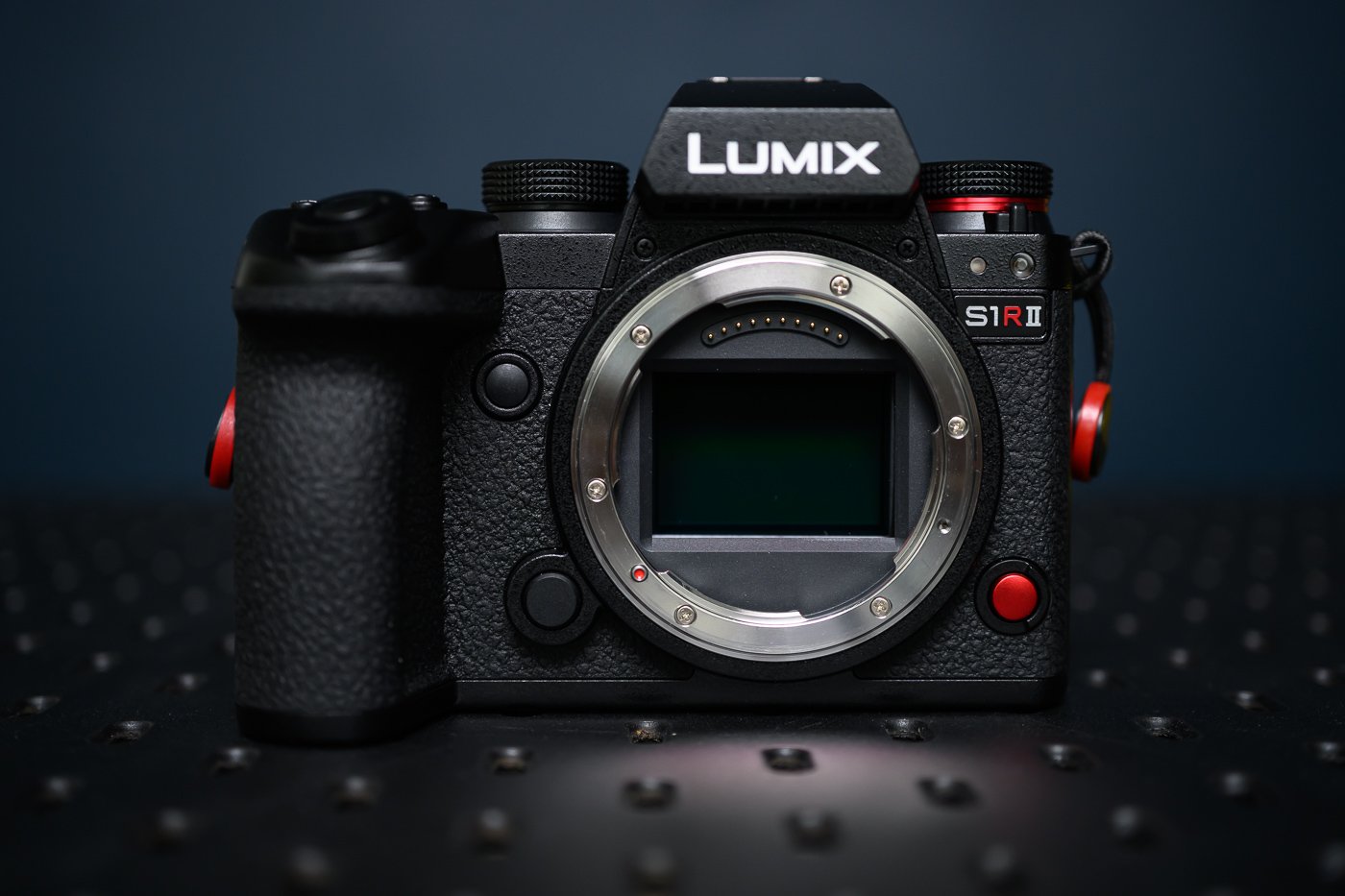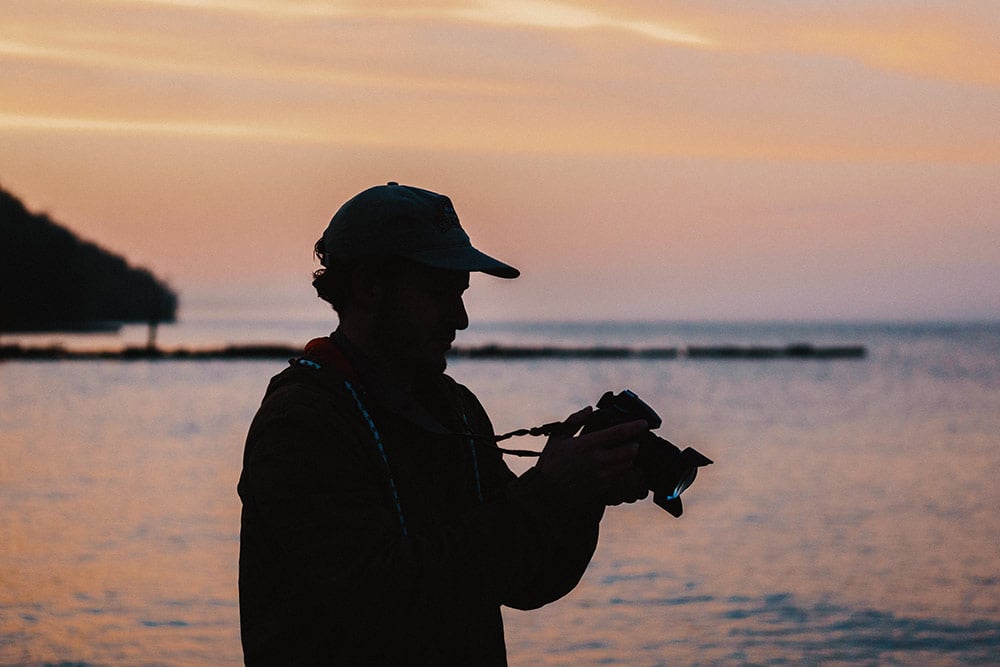Released in late February 2025, the Lumix S1R II cements its place as Panasonic’s flagship full-frame mirrorless camera. Boasting a new 44 MP sensor, it maintains the compact design of the S5 II while introducing smart ergonomic enhancements.
It features an advanced autofocus system, 8K video recording (a first for Panasonic), and a significantly improved sensor stabilization, even allowing for the capture of high-resolution photos handheld.
Ambitious, this camera aims to compete with the best on the market, also relying on a very competitive price. After a month of testing between Paris and Tokyo, here is our complete review of the Panasonic Lumix S1RII.

Sommaire
- Panasonic’s Most Advanced Full-Frame Camera
- Ergonomics: The Lumix S5 II, Only Better
- Performance and Image Quality of the Panasonic Lumix S1R II
- Autofocus and Tracking of the Panasonic Lumix S1R II
- Burst and Buffer
- Rolling Shutter
- Stabilization
- Panasonic Lumix S1R II: The Reliable Companion for Videographers?
- Battery Life of the Panasonic Lumix S1R II
- Connectivity and Storage
- Panasonic Lumix S1R II: Close to Perfection, But…
Panasonic’s Most Advanced Full-Frame Camera
Remember. Just six years ago, in February 2019, Panasonic introduced the Lumix S1 and S1R, its first full-frame mirrorless cameras. With its 47.3 Mpx sensor, the Lumix S1R (Mark I) stood out as the most defined full-frame mirrorless camera on the market at the time. A powerful device, but not without flaws. For example, it had a hesitant DFD autofocus, limited burst mode, and above all, an oversized form factor.
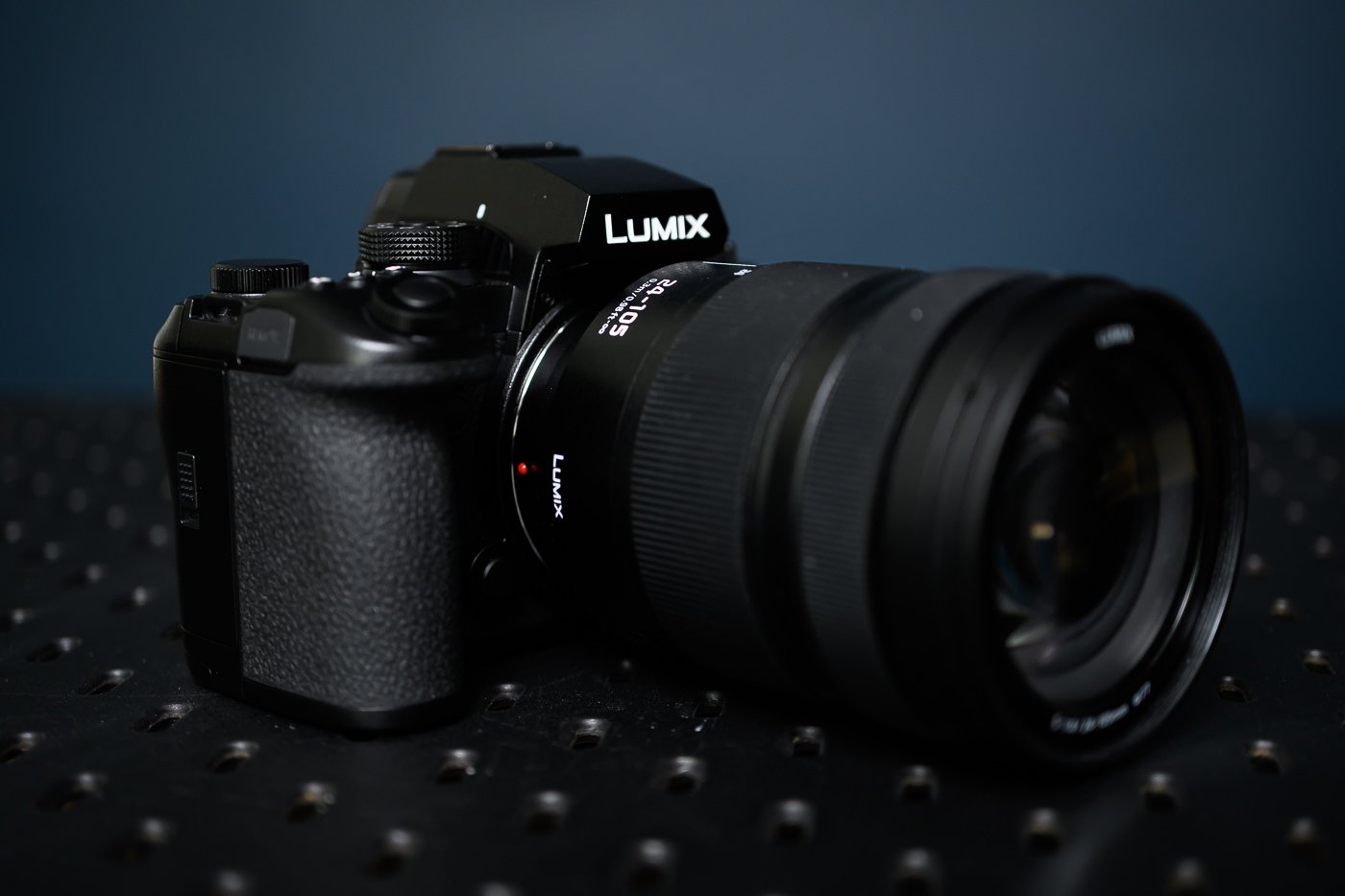
With the Lumix S1R II, Panasonic aims to address these issues by offering a much more versatile mirrorless camera. Equipped with a new back-illuminated CMOS sensor of 44.3 Mpx, the S1R II adopts the body of the Lumix S5 II / IIx – while making some interesting ergonomic adjustments. Additionally, the camera is equipped with a hybrid AF system and includes the latest advancements in autofocus technology from the manufacturer.
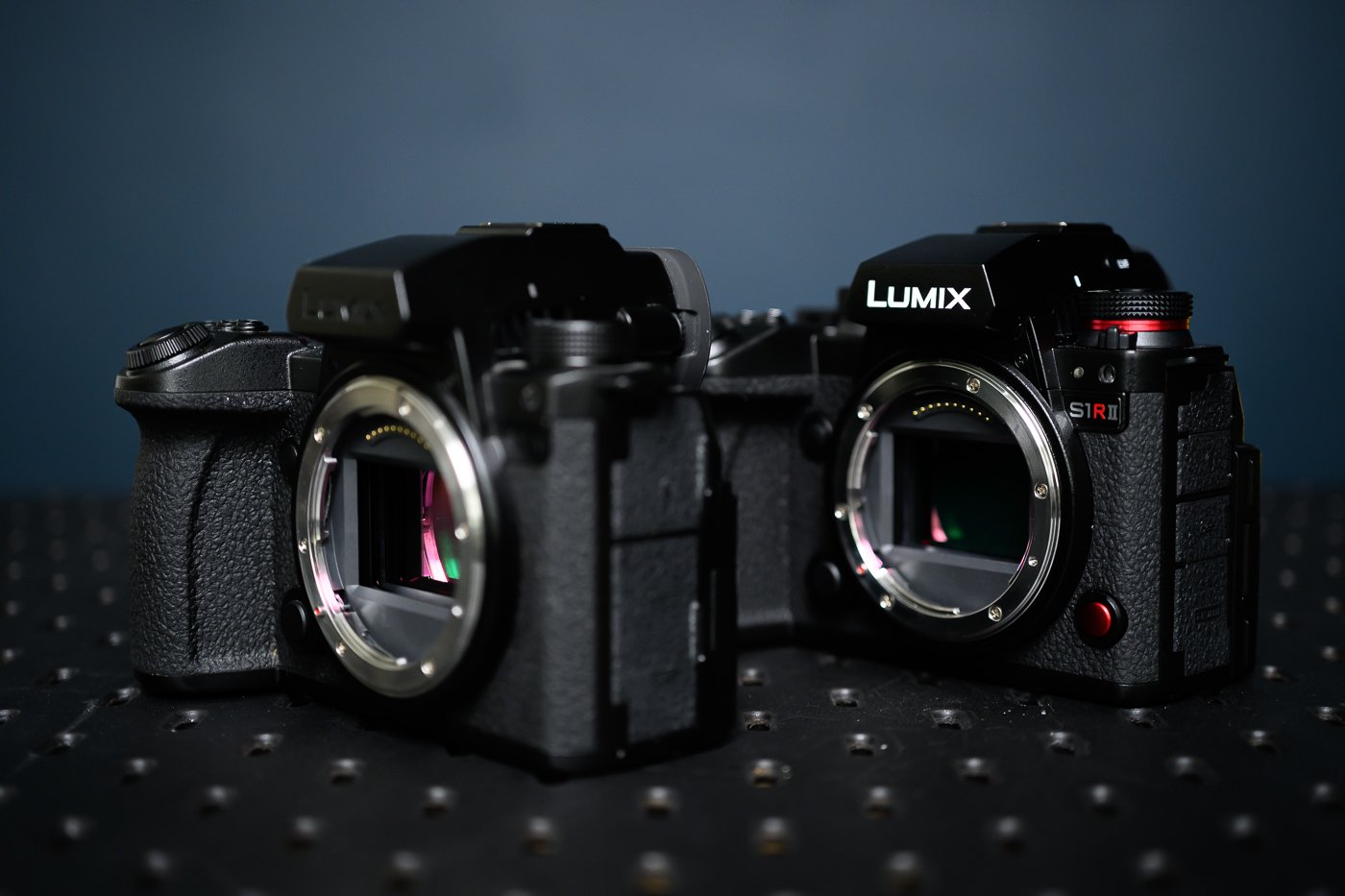
Panasonic also includes a 40 fps burst mode, making it the fastest shooting rate for this level of resolution. However, this feature loses some of its appeal due to the lack of a stacked sensor – we will discuss this later.
True to its reputation, Panasonic has not forgotten about video. The S1R II is even the first Lumix mirrorless camera capable of recording video up to 8K. An upcoming free update will make this performance possible across the entire sensor surface (the famous “Open Gate”). Those who enjoy cropping will appreciate this feature. And of course, the camera includes a plethora of video options.
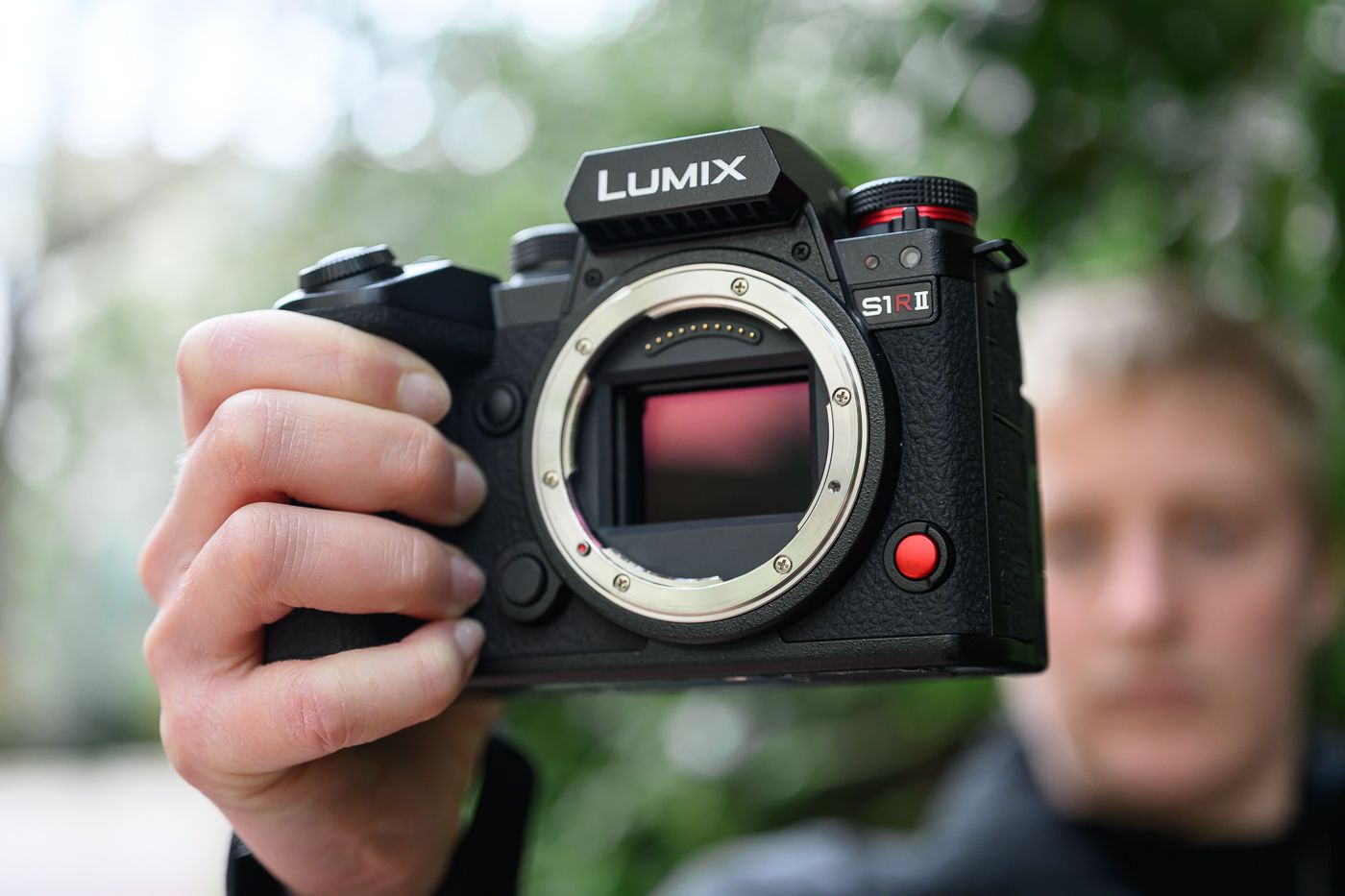
Very well-equipped and priced far below its competitors, the Lumix S1R II seems ready to shake up the Nikon Z8, Canon EOS R5 Mark II, and Sony A1 II.
It targets professional photographers and videographers, looking for a camera equally at ease in reportage, studio work, or on a film set. Could this be the ultimate device? That’s what we’re about to find out.
Here is the list of specifications for the Panasonic Lumix S1R II compared to Lumix S1R :
| Specification | Lumix S1R II | Lumix S1R | |
|---|---|---|---|
| Sensor | 24x36, BSI CMOS 44.3 MP | 24x36, CMOS 47.3 MP | |
| Low-pass filter | No | No | |
| Processor | N.C. | N.C. | |
| Mount | L | L | |
| Electronic viewfinder | OLED, 5.76 MP, 0.78x, 120 Hz, 21 mm | OLED, 5.76 MP, 0.78x, 120 Hz, 21 mm | |
| LCD screen | TFT, touchscreen, tiltable and swivel, 3'', 1.84 MP | TFT, touchscreen, tiltable, 3.2'', 2.1 MP | |
| Autofocus | Hybrid autofocus with phase detection and contrast (DFD) | Contrast detection autofocus (DFD) | |
| AF points | 779 | 225 | |
| AF coverage | 100% | 100% | |
| Automatic detection and tracking | Face, eye, body, animal, car, motorcycle, bicycle, train, airplane | Face, eye, body, animal | |
| AF range | -6 to 18 EV | -6 to 18 EV | |
| Photo/Video sensitivity | 80 to 51,200 ISO (expandable 40 to 102,400 ISO) | 100 to 25,600 ISO (expandable 50 to 51,200 ISO) | |
| Dual native ISO | Yes, 80 - 400 ISO | No | |
| Mechanical burst shooting | 10 fps | 6 fps | |
| Electronic burst shooting | 40 fps | 5 fps | |
| Buffer | 70 images | 35 images | |
| Pre-capture mode | Yes, 1.5 s | No | |
| High-resolution mode | Yes, pixel-shift, 177 MP, handheld | Yes, pixel-shift, 187 MP | |
| Shutter speed | 60 s - 1/8000 s (mechanical); 60 s / 1/16,000 (electronic) | 60 s - 1/8000 s (mechanical); 60 s / 1/16,000 (electronic) | |
| Video resolutions | 8.1K 30p, 6.4K 30p 3:2, 5.9K 60p 4:2:0 10 bits; C4K 60p 4:2:2 10 bits; 4K 120p; 5.8K 24p ProRes RAW HQ | 5K 60p 4:2:2 10 bits, 4K 60p 4:2:0 8 bits | |
| Video formats | All-Intra, LongGOP, Apple ProRes, ProRes RAW | LongGOP | |
| Color profiles | HLG, V-Log, V-Gamut, Cinelike A2, Real-time LUT | HLG | |
| Storage | 1x CFexpress Type B + 1x SD UHS-II + External SSD | 1x CFexpress Type B + 1x SD UHS-II | |
| Wireless connectivity | Wi-Fi 5 and Bluetooth 5.0 LE | Wi-Fi 5 and Bluetooth 4.2 LE | |
| Battery | DMW-BLK22, 2200 mAh | DMW-BLJ31, 3050 mAh | |
| USB charging | Yes, USB-C | Yes, USB-C | |
| Weather sealing | Yes, -10°C to 40°C | Yes, -10°C to 40°C | |
| Dimensions | 134.3 x 102.3 x 91.8 mm | 148.9 x 110 x 96.7 mm | |
| Weight | 795 g | 1020 g | |
| Launch price (body only) | $3,297 | $3,699 |
Ergonomics: The Lumix S5 II, Only Better
The Lumix S1R II looks very much like an S5 II / IIx / G9 II. In fact, according to Panasonic, the body is 98% similar to its latest models.
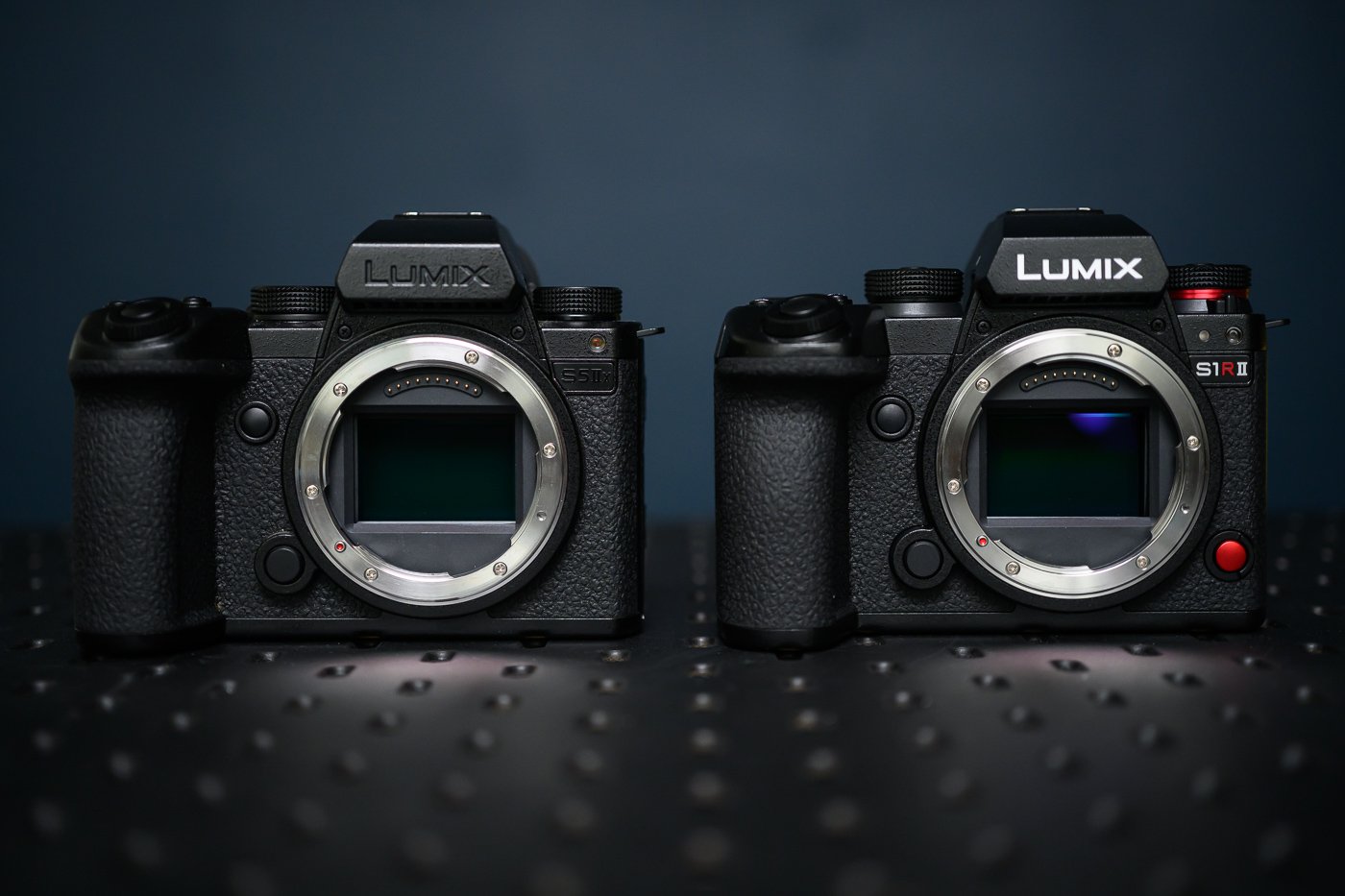
With a weight of 795 g and dimensions of 13.4 x 10.2 x 9.2 cm, the S1R II stands out from the 1.02 kg (!) and 14.9 x 11 x 9.7 mm of the original S1R. It thus addresses the main criticism of the first model, which was larger than a DSLR.
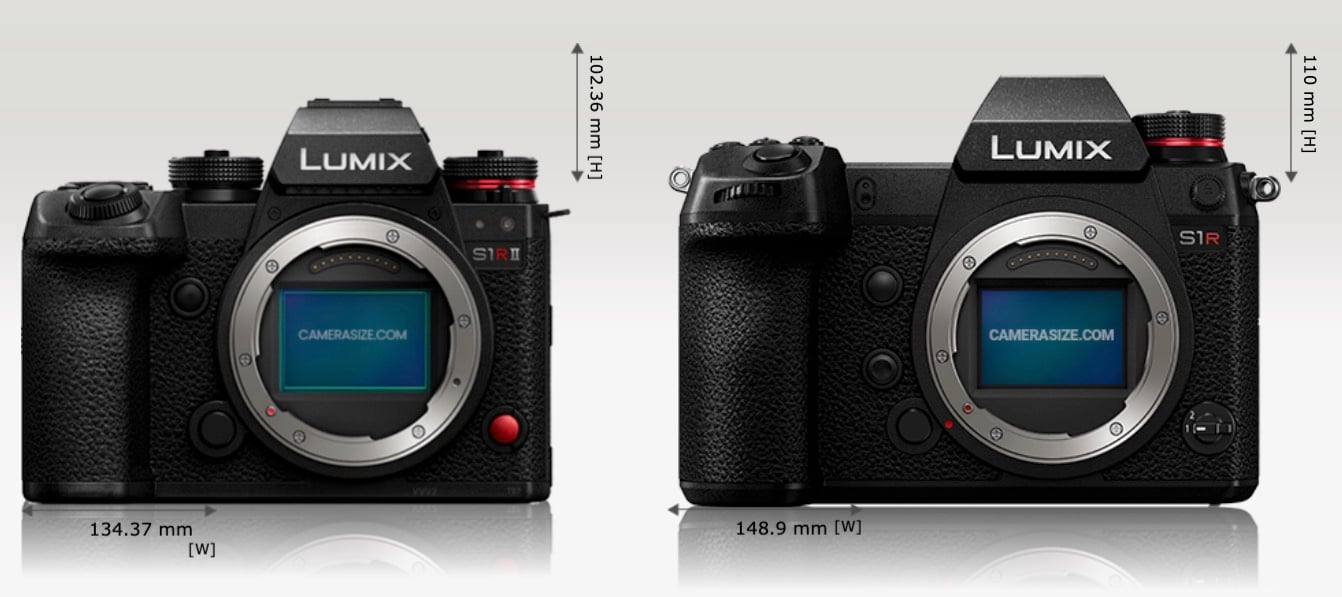
The finish is very refined. The design is rather understated and without excess. The handling is excellent thanks to a slightly deeper grip than that of the S5 II.
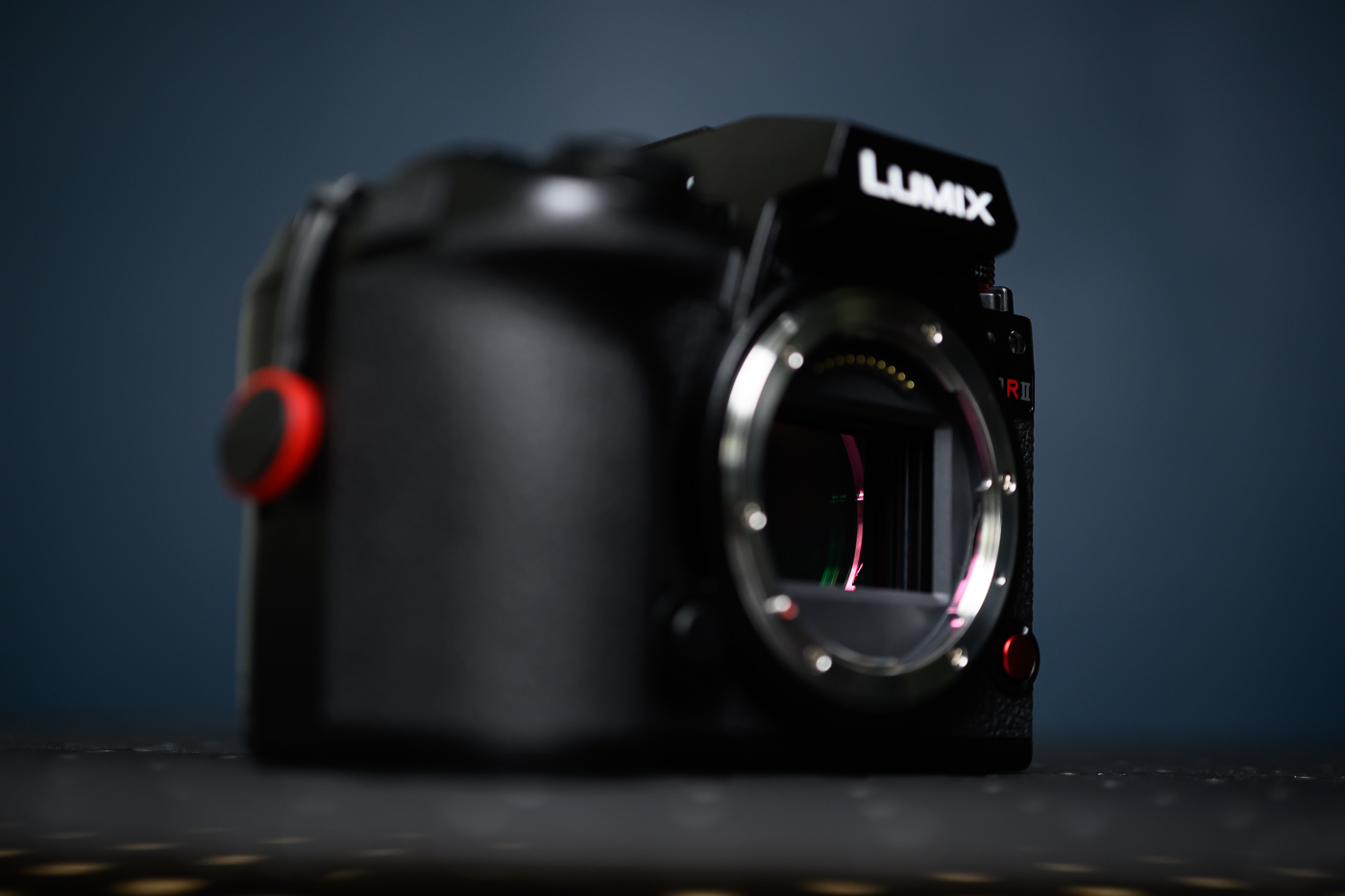
As usual, Panasonic has equipped its S1R II with numerous controls, some borrowed from the S5 II, while others are completely new for the manufacturer.
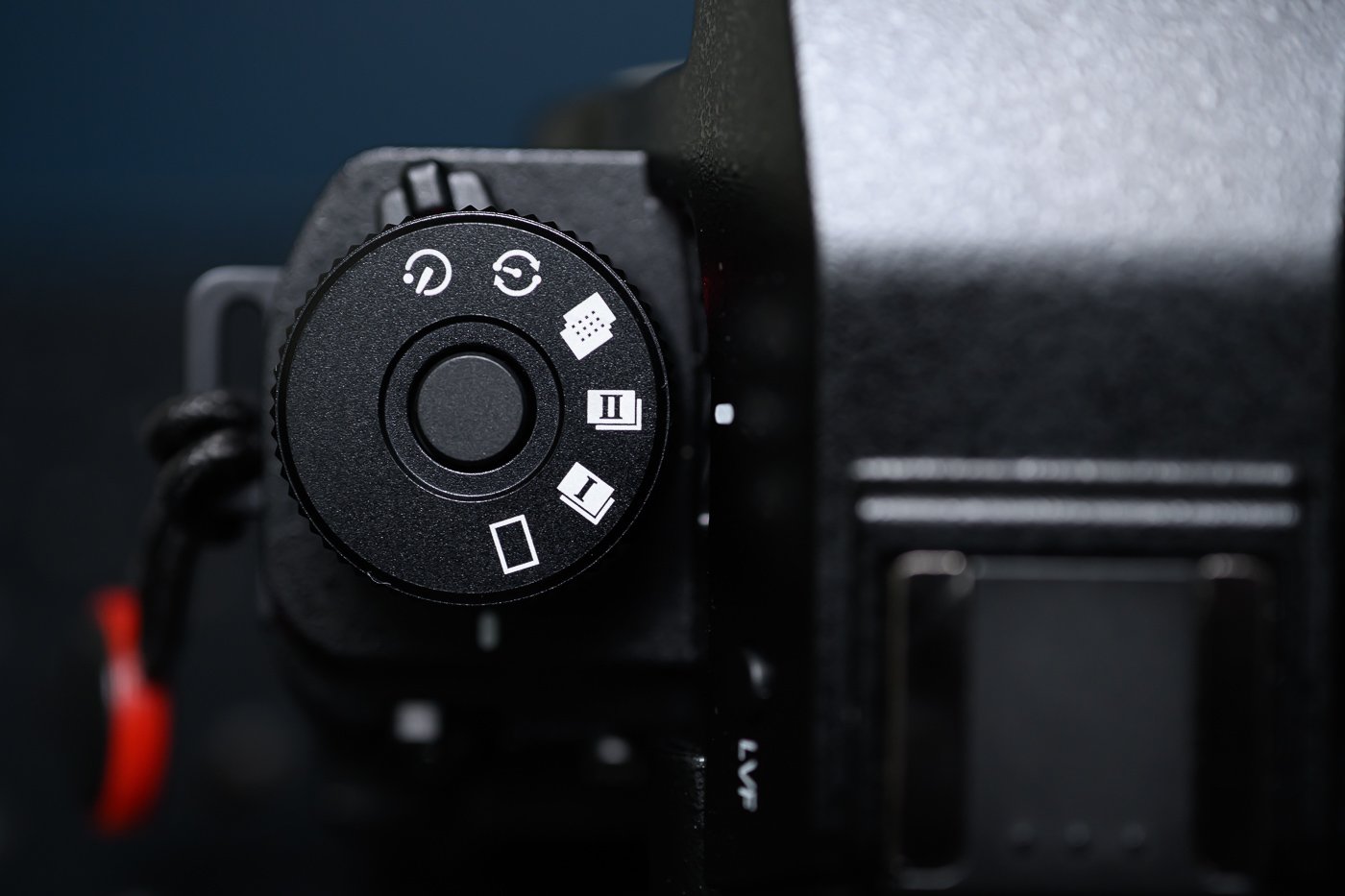
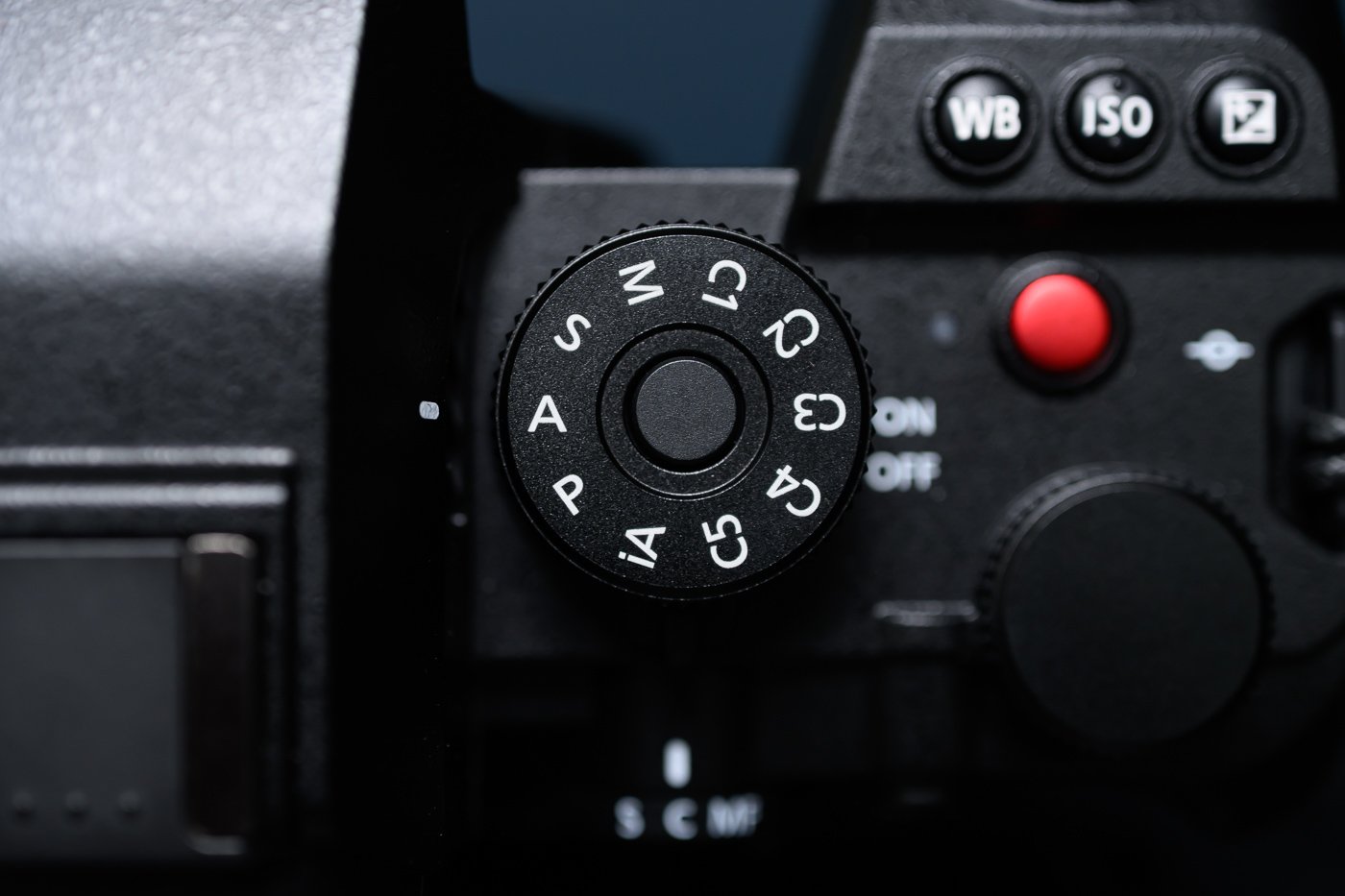
A new photo / video / S&Q switch located under the dial to the left of the viewfinder allows for two distinct modes, preventing parameter confusion. This may seem minor, but it is very useful, and almost all manufacturers offer it nowadays.
Likewise, the two main dials (PASM and drive mode) can be locked, preventing accidental adjustments.
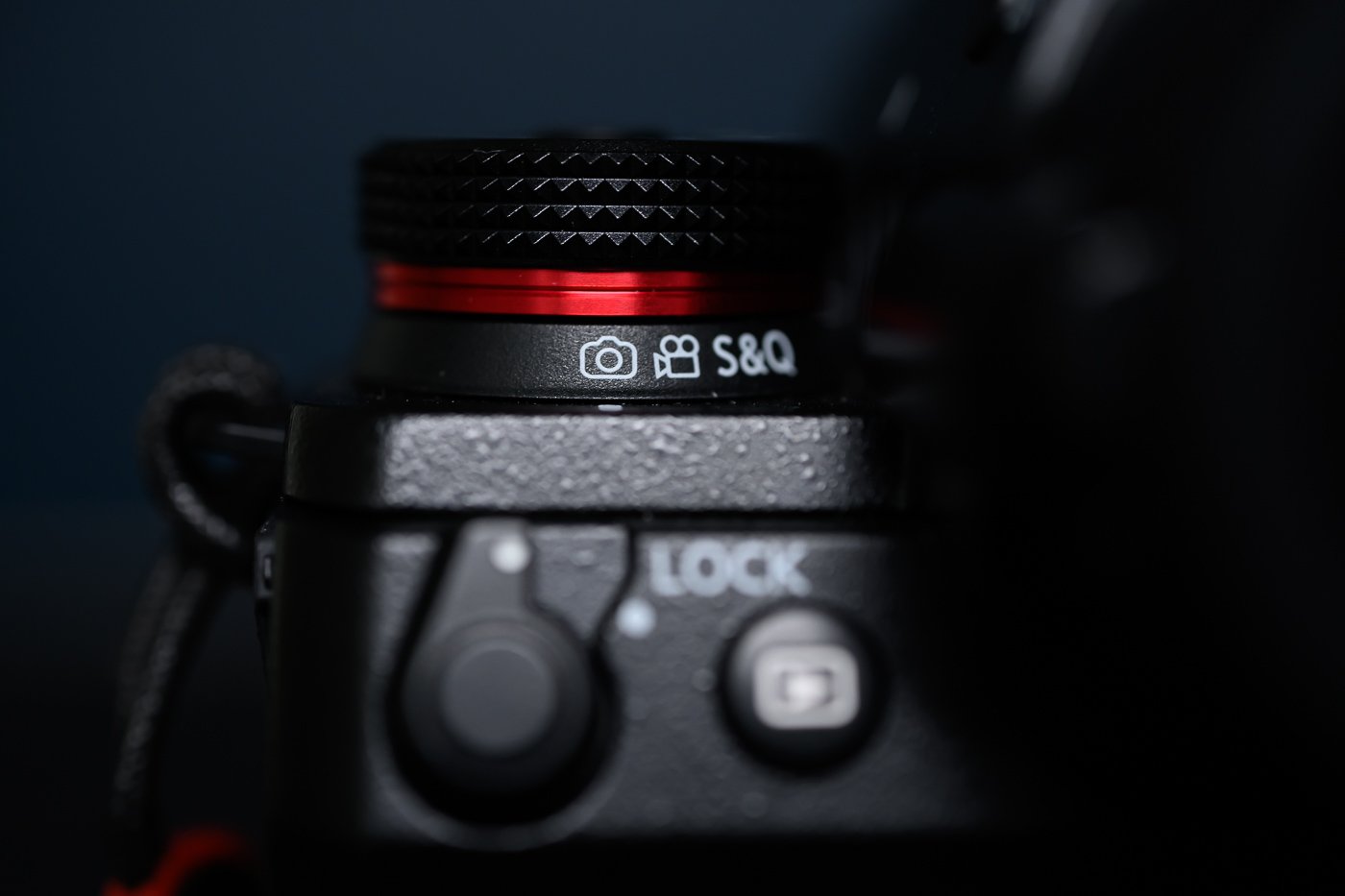
The body also includes a locking lever that allows you to disable all controls, except those you choose to keep active. The front of the S1R II has also seen some interesting improvements. First, the camera is equipped with a tally light on the front – a first for a full-frame Lumix.
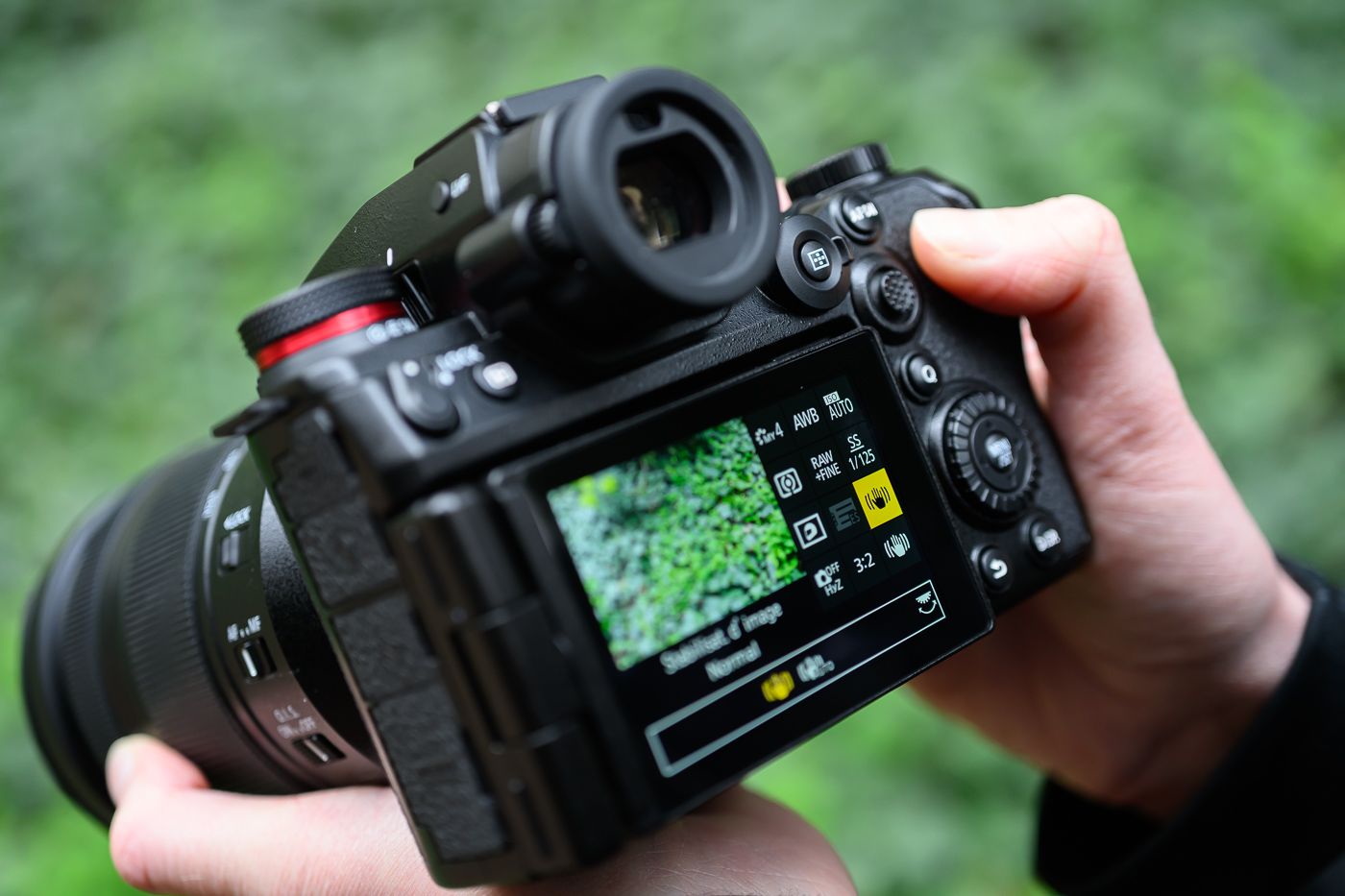
A second video recording button, placed on the front near the mount, is added to the one on the top. While some videographers might see this as an advantage, it has proven to be rather troublesome in practice.
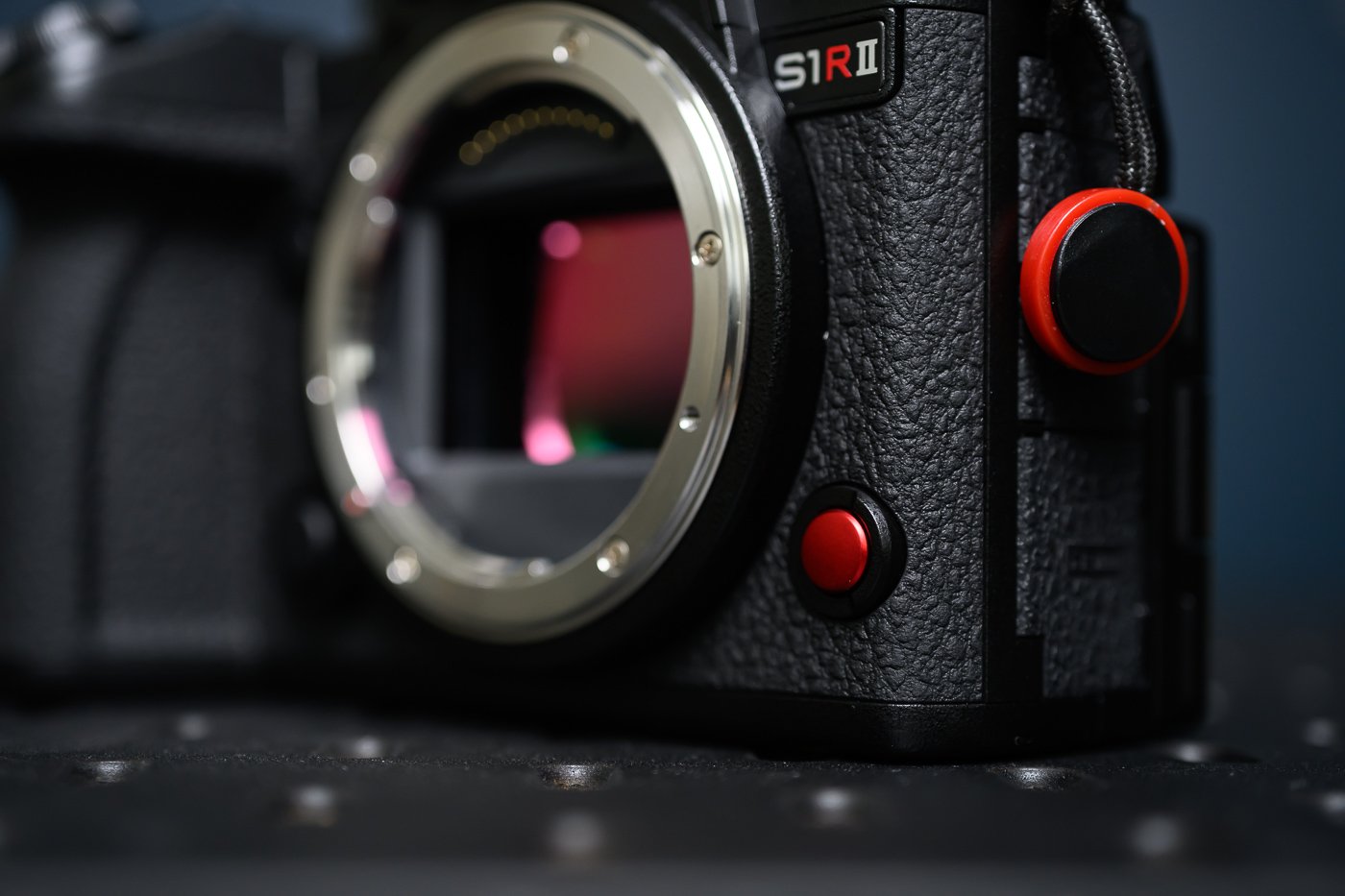
Easy to accidentally activate, it often triggers unwanted videos, even when shooting photos, navigating menus, or reviewing images. Video recording can thus start at any moment. We preferred to assign it another function, a setting that needs to be configured separately for the three modes: photo, video, and playback.
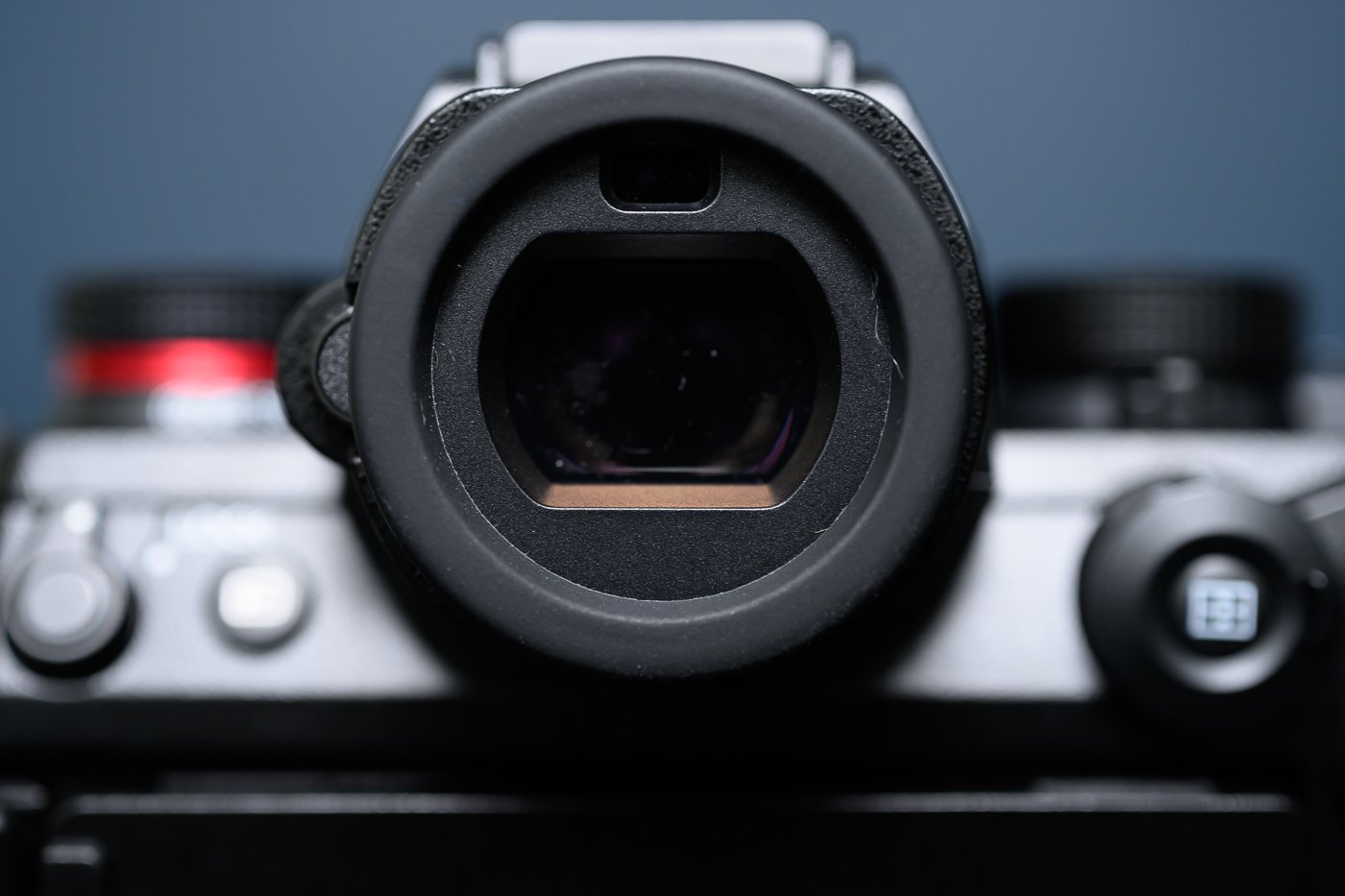
The Lumix S1R II retains the electronic viewfinder of the first S1R, with a semi-rigid round eyecup. It still offers a resolution of 5.76 MP (compared to 3.68 MP for the S5 II), with a refresh rate of 120 Hz.
The viewfinder is particularly clear and precise, with vivid colors – a real plus during shooting. However, during editing, the images sometimes appear less flattering than what the viewfinder suggested. As with the S5 II, Panasonic has integrated a fan under the faux prism, enabling unlimited video recording.
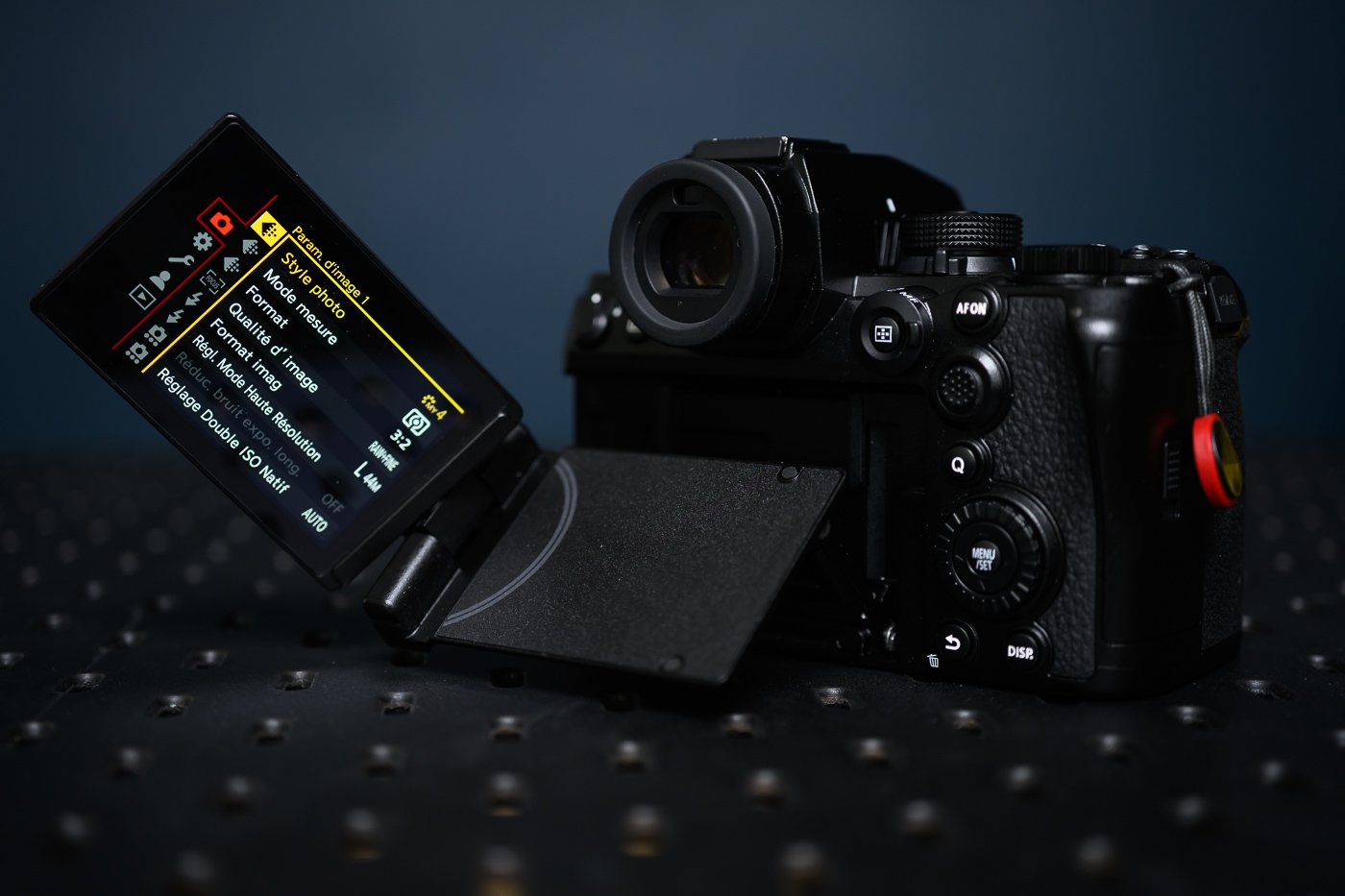
The screen has been thoroughly redesigned. It is now articulated and tiltable (touchscreen, 3 inches, and 1.84 MP), similar to what Sony offers on its A1 II / A9 III / A7R V. This system, practical for both photos and videos, is well integrated into the chassis, adding almost no thickness and appearing robust.
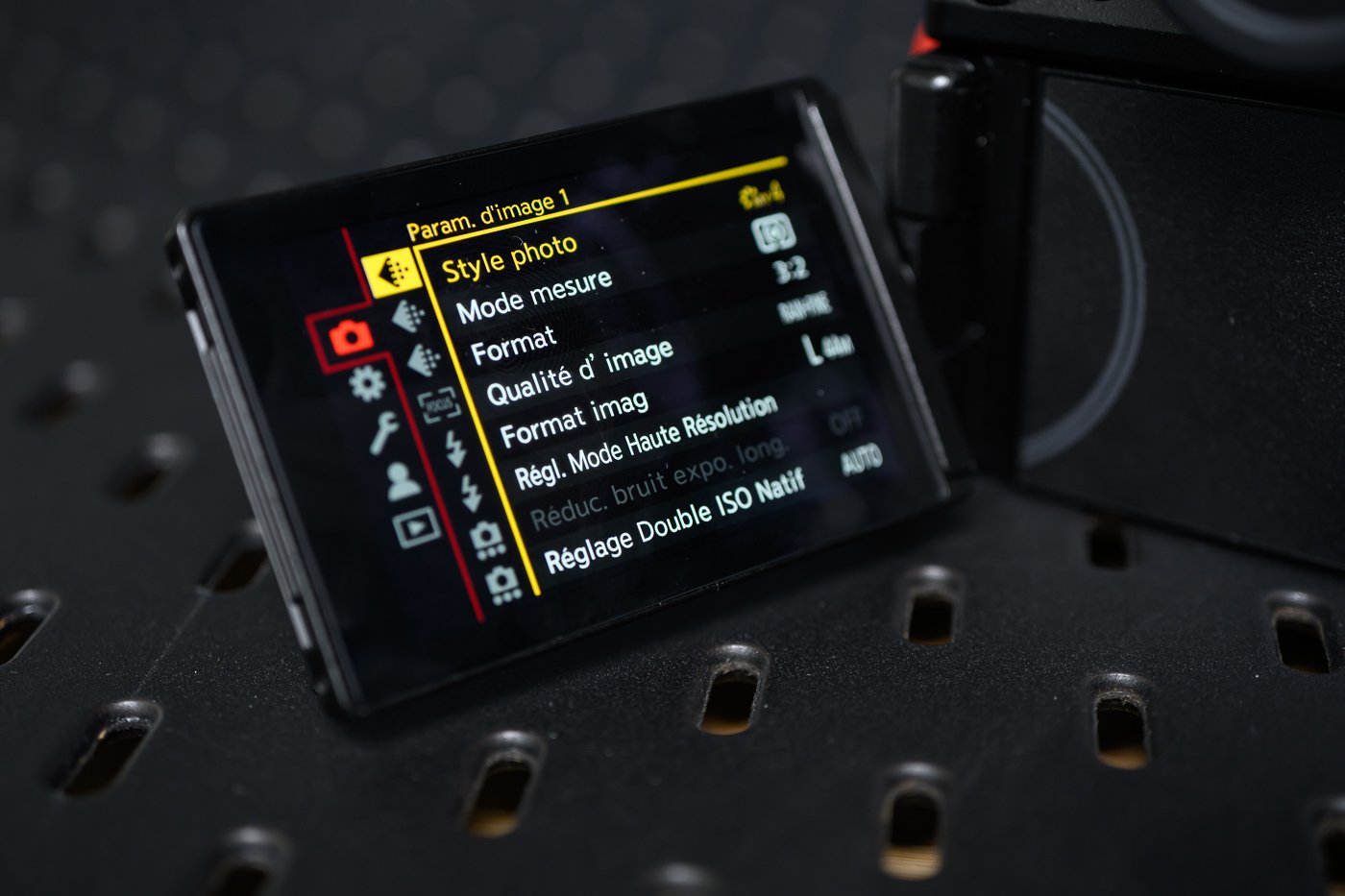
At the back, the focus mode selector has been slightly shifted to the right. The thumb rest is also a bit smaller. No worries, however, as this doesn’t affect handling thanks to the grip. A small tally lamp has also been installed at this spot.
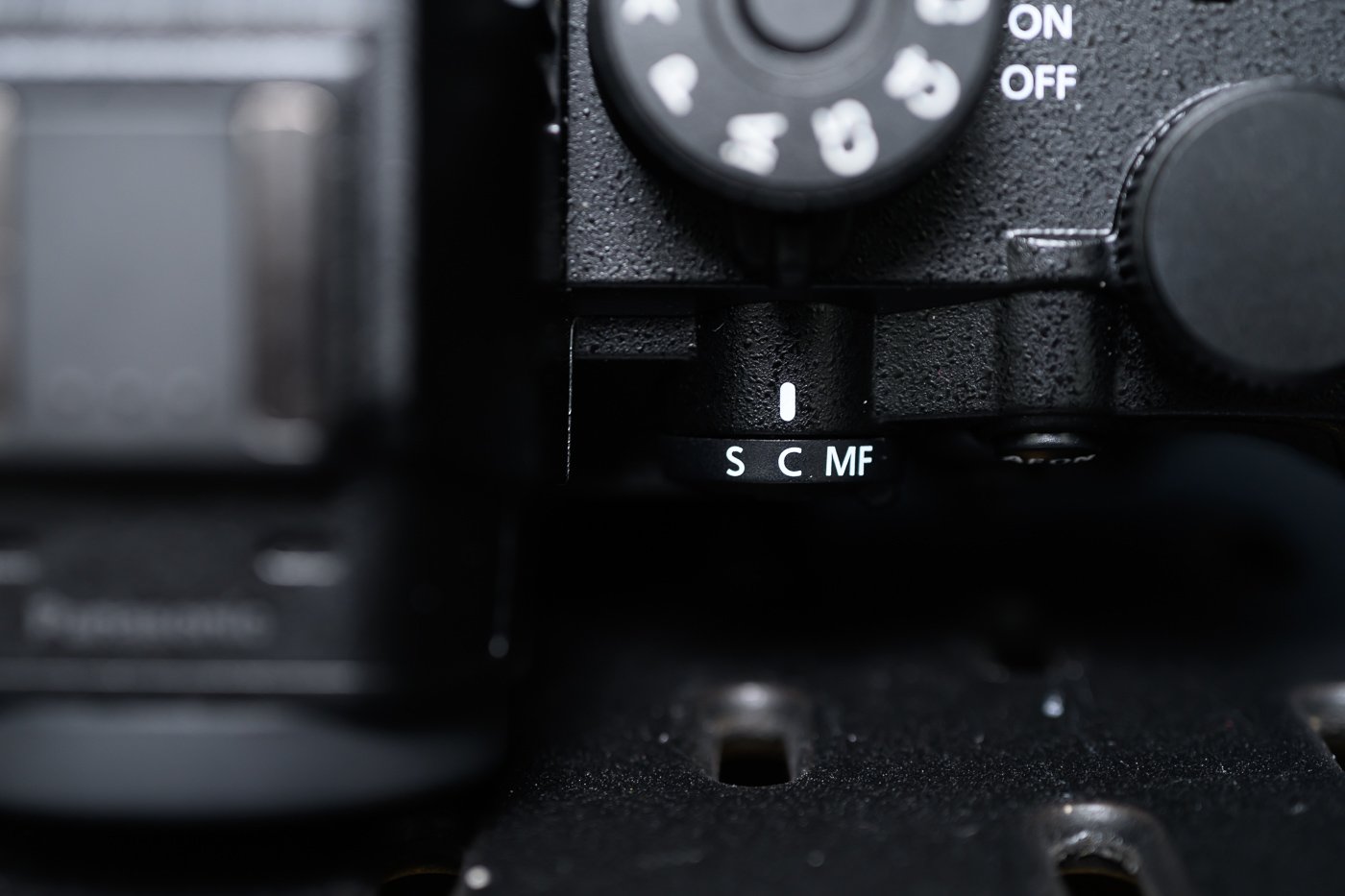
For the first time on a Panasonic camera, it is possible to activate the shutter closing on shutdown. A very useful option to protect the sensor and one that is becoming common across different manufacturers. Hopefully, Panasonic, like Sony, will offer this feature via firmware updates for its other bodies.
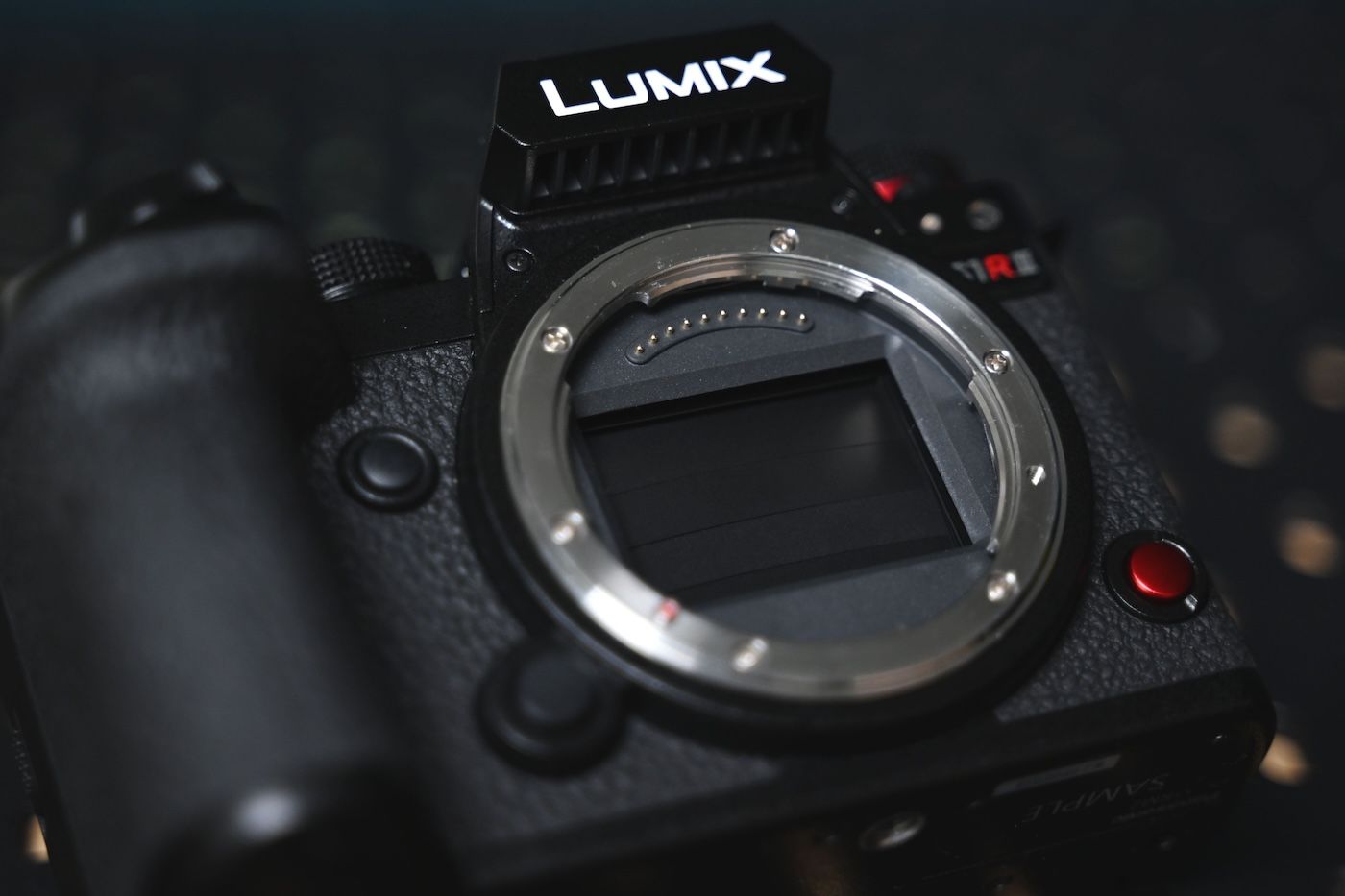
The body is well protected by numerous sealing joints and offers advanced resistance against bad weather, dust, and even freezing temperatures.
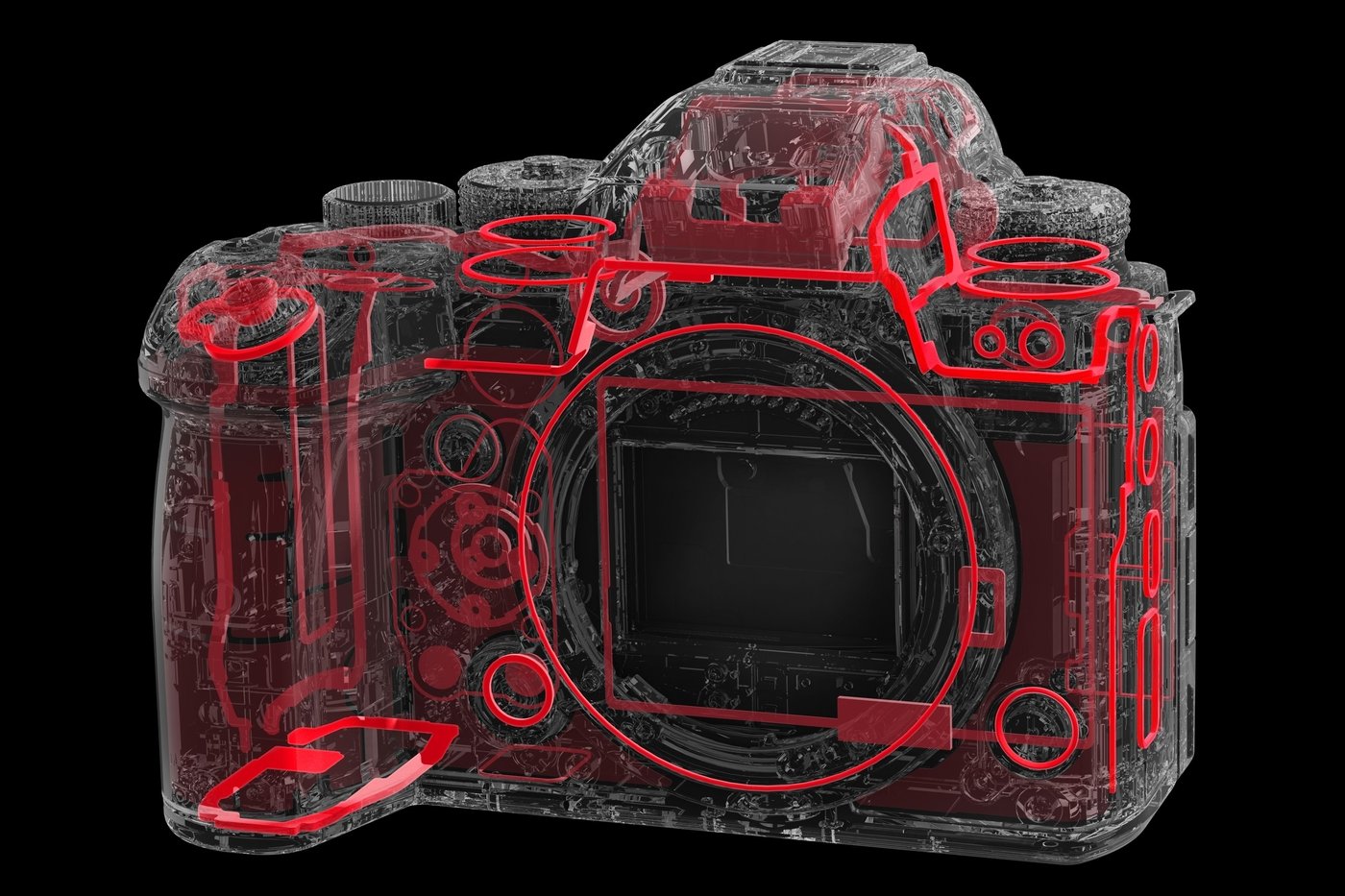
Overall, this Lumix S1R II offers an excellent grip. Panasonic regulars will notice relevant improvements like the photo/video switch, while newcomers will benefit from a well-designed body. The only small drawback is the unconvincing second REC button and the still-imperfect menus.
The menus have not evolved for years and remain just as unclear. Austere and sometimes complicated in layout, they require numerous back-and-forths to find a simple option. A complete overhaul would be welcome. Consider this a friendly suggestion!
Performance and Image Quality of the Panasonic Lumix S1R II
The Panasonic Lumix S1R II is equipped with a 44.3 MP full-frame stabilized and back-illuminated CMOS sensor. It is very likely the Sony IMX366 sensor.
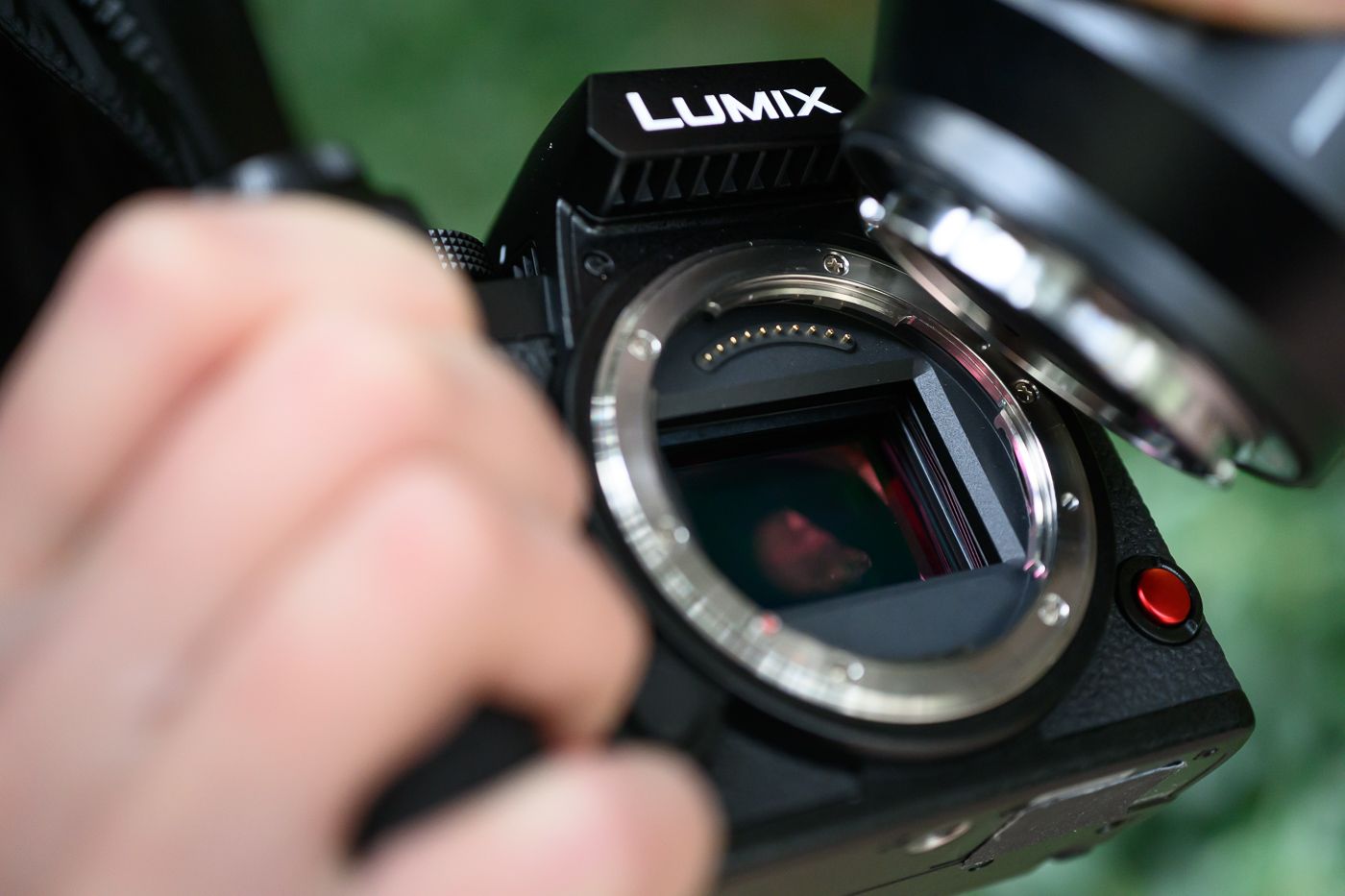
It offers a slightly lower resolution than the S1R (Mark I) – but the difference is ultimately quite marginal (44.3 MP vs 47.3 MP). Moreover, according to Panasonic, this choice allows for a balance between noise management and high resolution. The JPEG files are around 22 MB, while the RAW files are approximately 60 MB.
During our test, we were able to use the Lumix S1R II with a wide range of L-mount lenses from Sigma or Panasonic. We used the Lumix S 18 mm f/1.8 and 35 mm f/1.8 as well as the Sigma 24-70 mm f/2.8 DG DN II Art, 105 mm f/1.4 DG HSM Art, 28-45 mm f/1.8 DG DN Art, 90 mm f/2.8 DG DN Contemporary, Lumix S 18 mm f/1.8 and 35 mm f/1.8.
Feel free to click on the photos in this review to view them in higher quality.
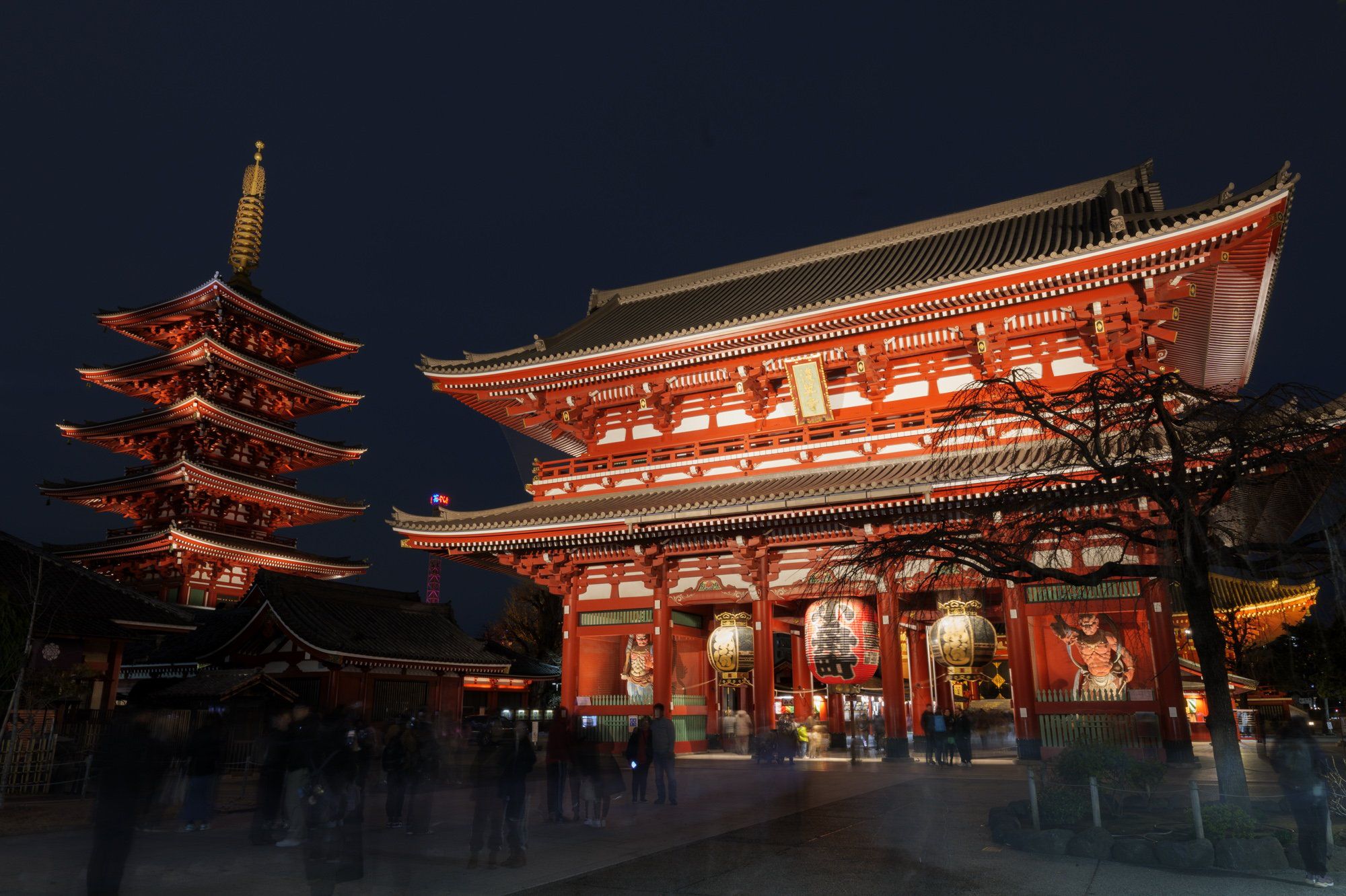

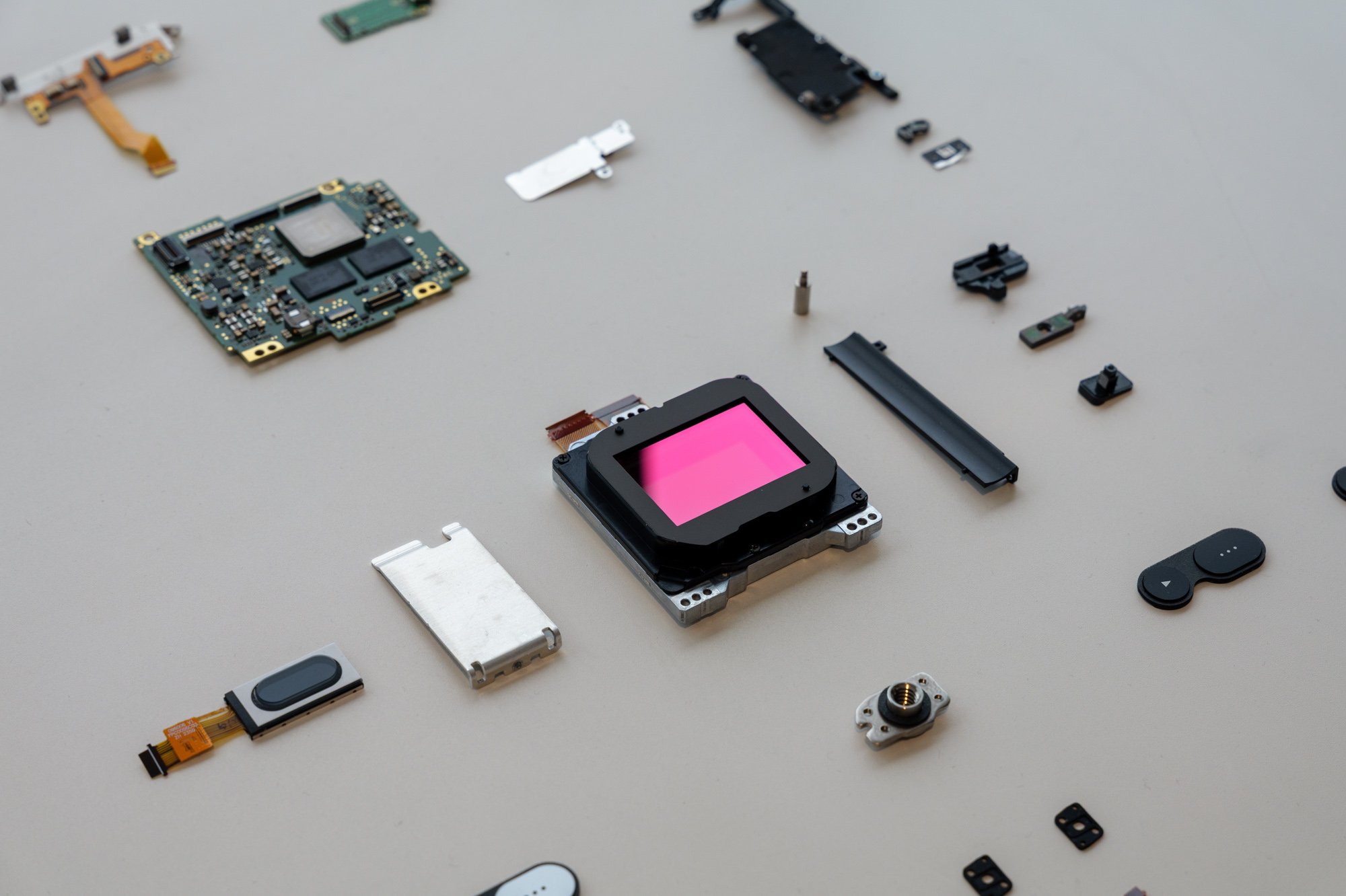
The images captured are very pleasing. The colors are deep and the contrasts are well-defined. Once again, Panasonic demonstrates its expertise in color science. The color rendering is very accurate, while providing beautiful intensity.
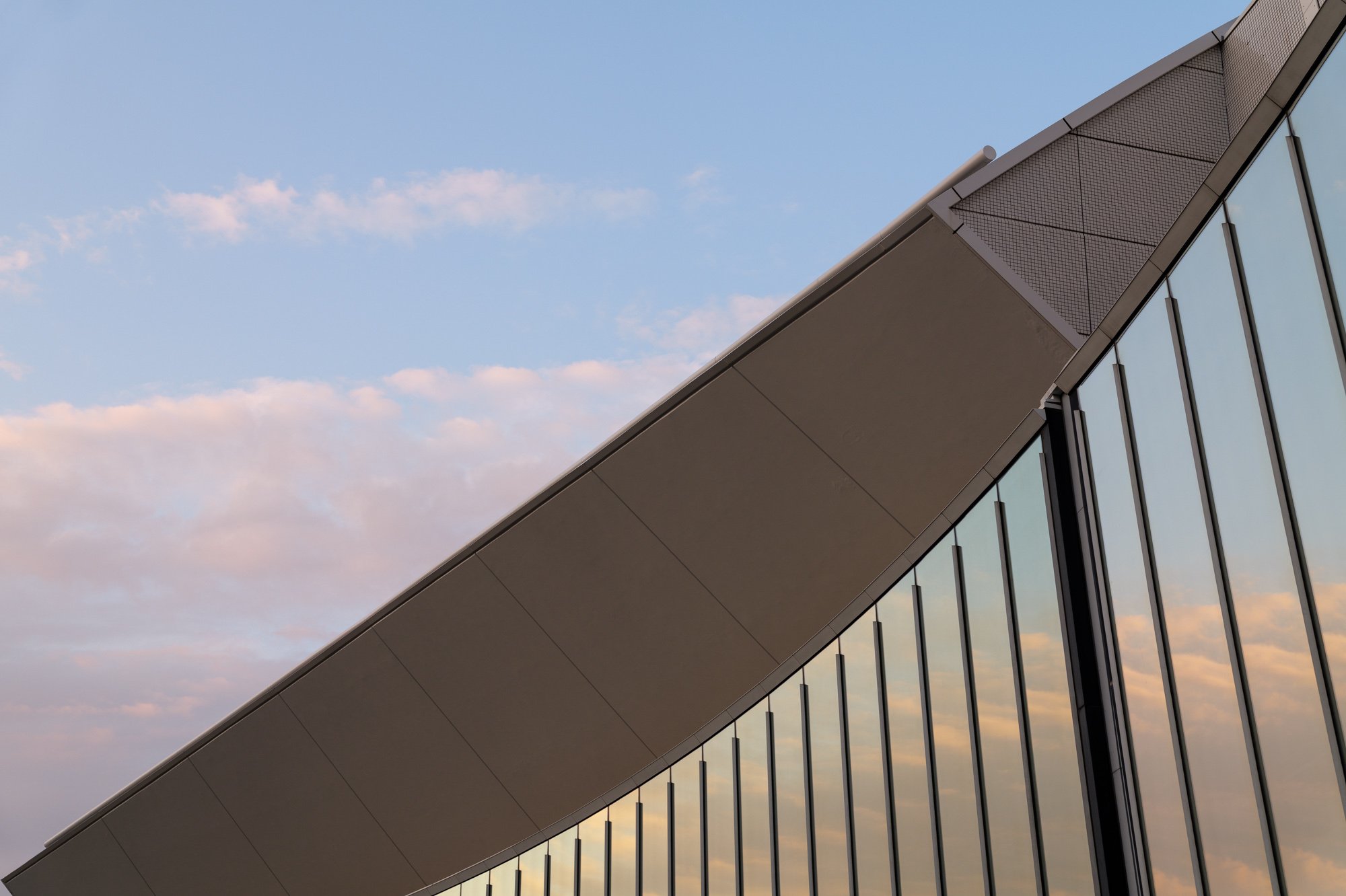
The 44 MP resolution allows for easy cropping of images while maintaining good quality. It is thus possible to admire all the details of the shot and appreciate the sensor’s excellent rendering capabilities.
Aside from the good intrinsic quality of the files, there are many integrated color and black-and-white modes available in the camera. Additionally, with the Lumix Lab app, you can download and create LUTs to add even more character to your shots.
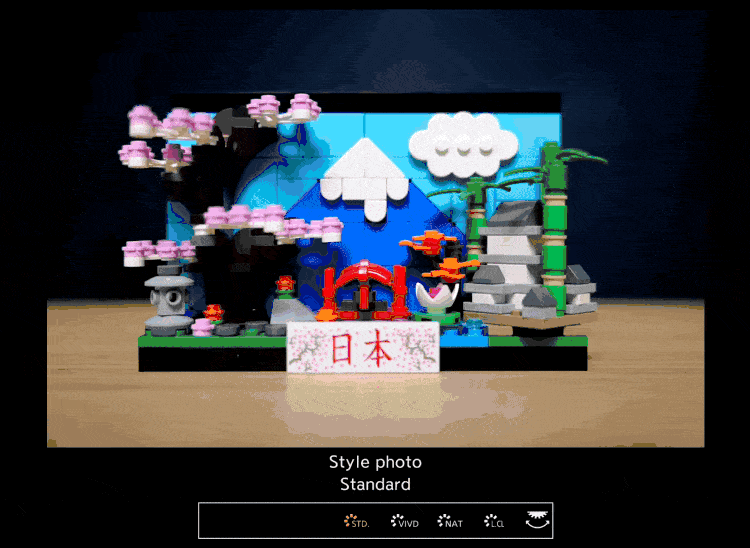
ISO Performance
The default sensitivity range of the Panasonic Lumix S1R II goes from 80 to 51,200 ISO, expandable from 40 to 102,400 ISO. It also benefits from a dual native ISO of 80 and 400 ISO.



We are accustomed to the excellent performance of modern sensors, and this S1R II is no exception. Files are virtually noise-free up to 800 ISO, and you have to reach 1600 ISO to notice the beginning of graininess.


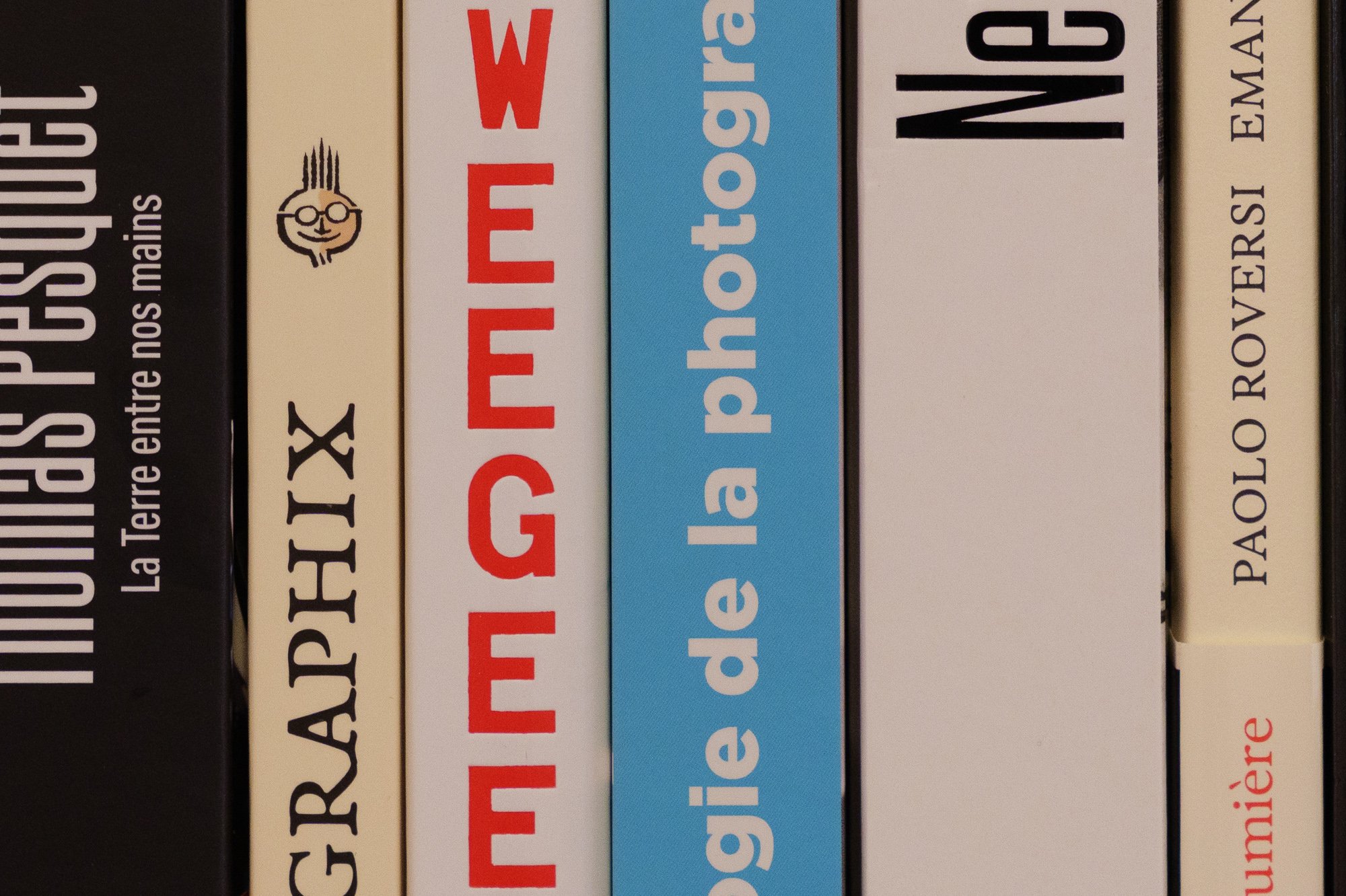
Noise increases very slightly from 3200 ISO. A second threshold is reached around 12,800 ISO, though it remains acceptable and easily recoverable.
At high ISO, noise – although still relatively fine – becomes more noticeable. From 25,600 ISO, it also results in a slight color shift.
This is especially true at the extended value of 102,400 ISO. While you can still observe many details, the electronic noise is then too present and a greenish tint alters the image.
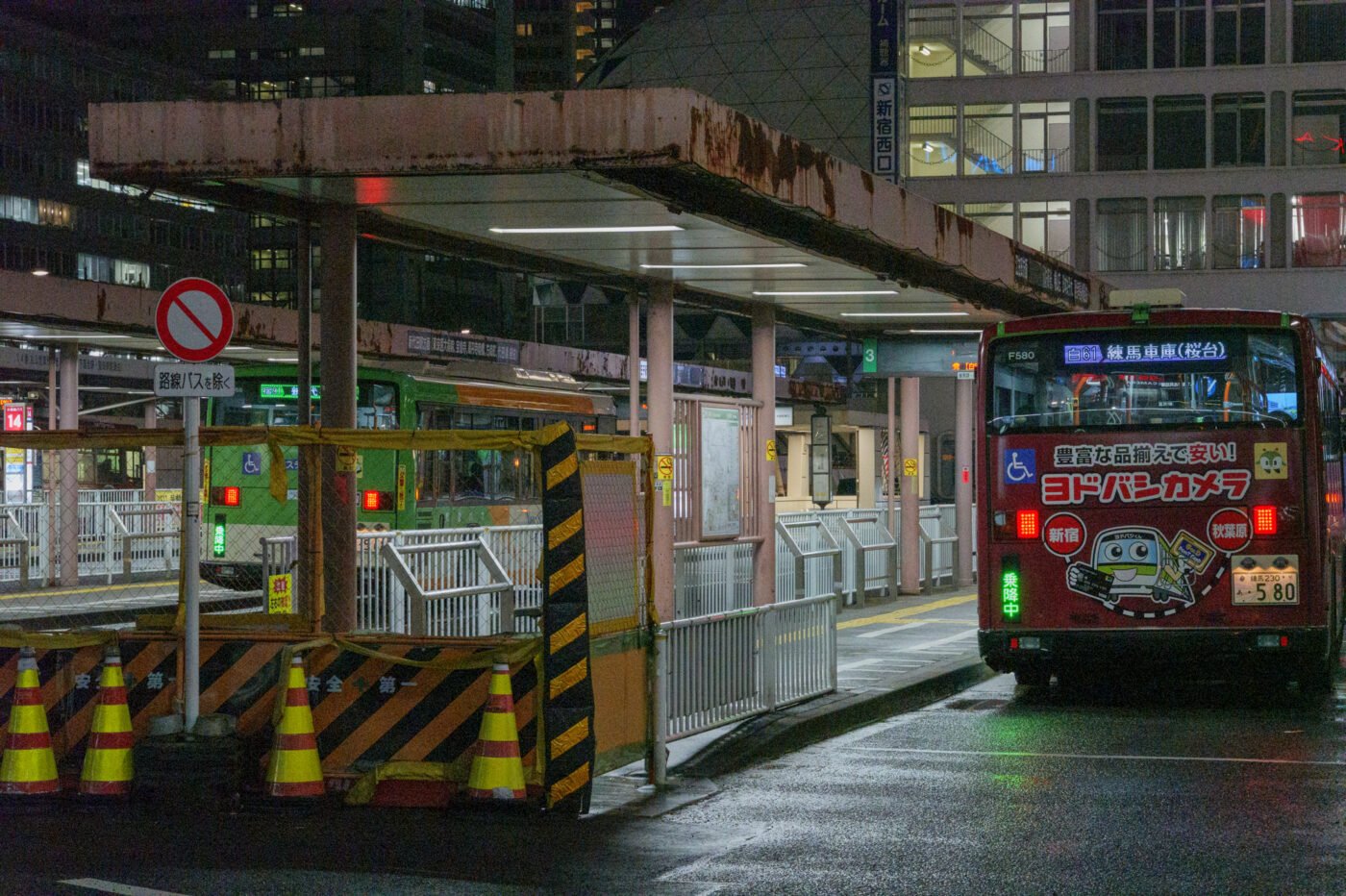
In any case, the S1R II sensor offers very good high ISO management and doesn’t pale in comparison to the best references in the field.
Dynamic Range
When it comes to dynamic range, this Lumix S1R II performs admirably well.
For recovering underexposed areas, it is possible to retrieve details without too much trouble up to -3 EV without noticing any image degradation. A slight digital noise appears just before -4 EV, although it remains quite limited.
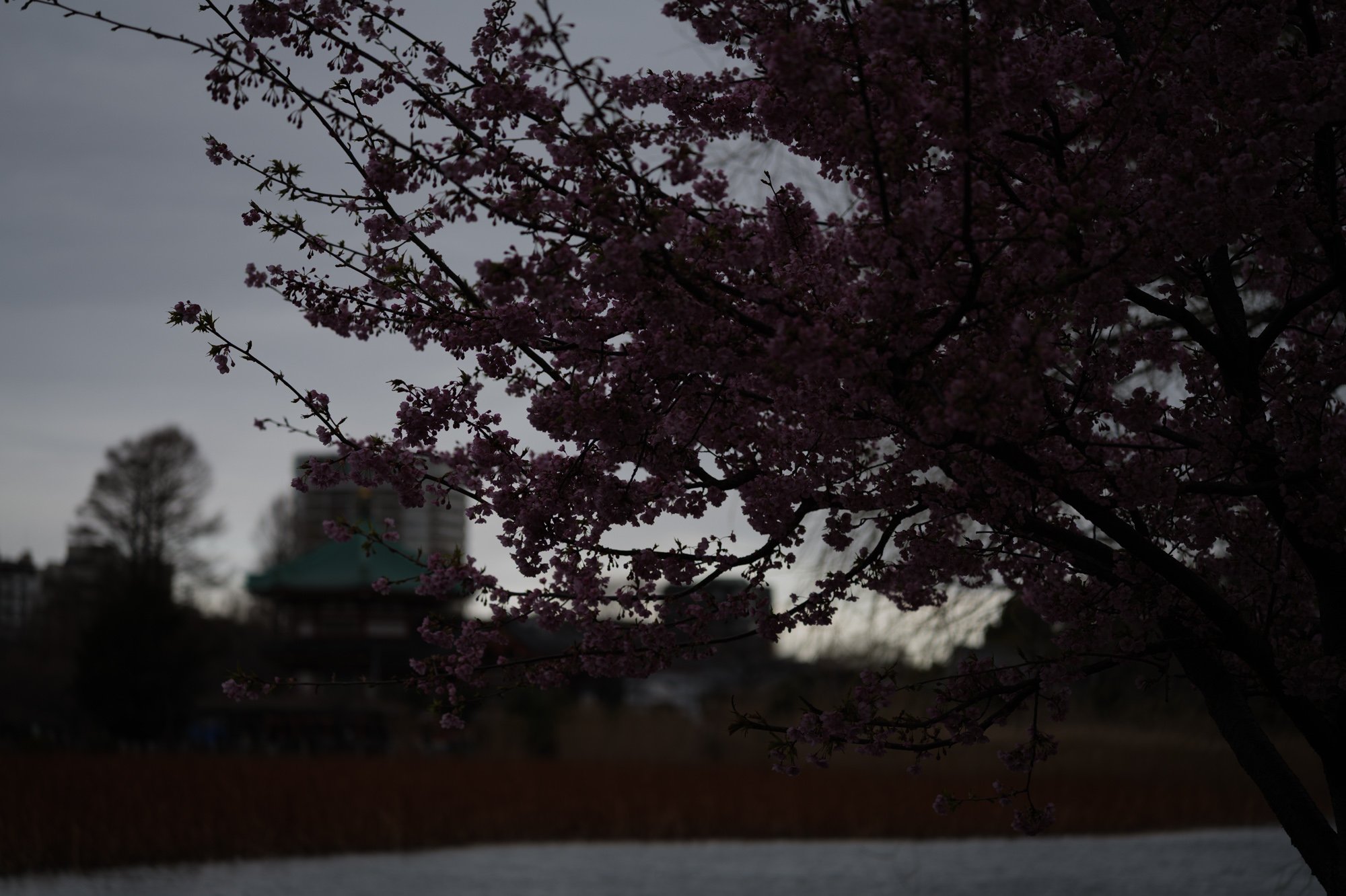
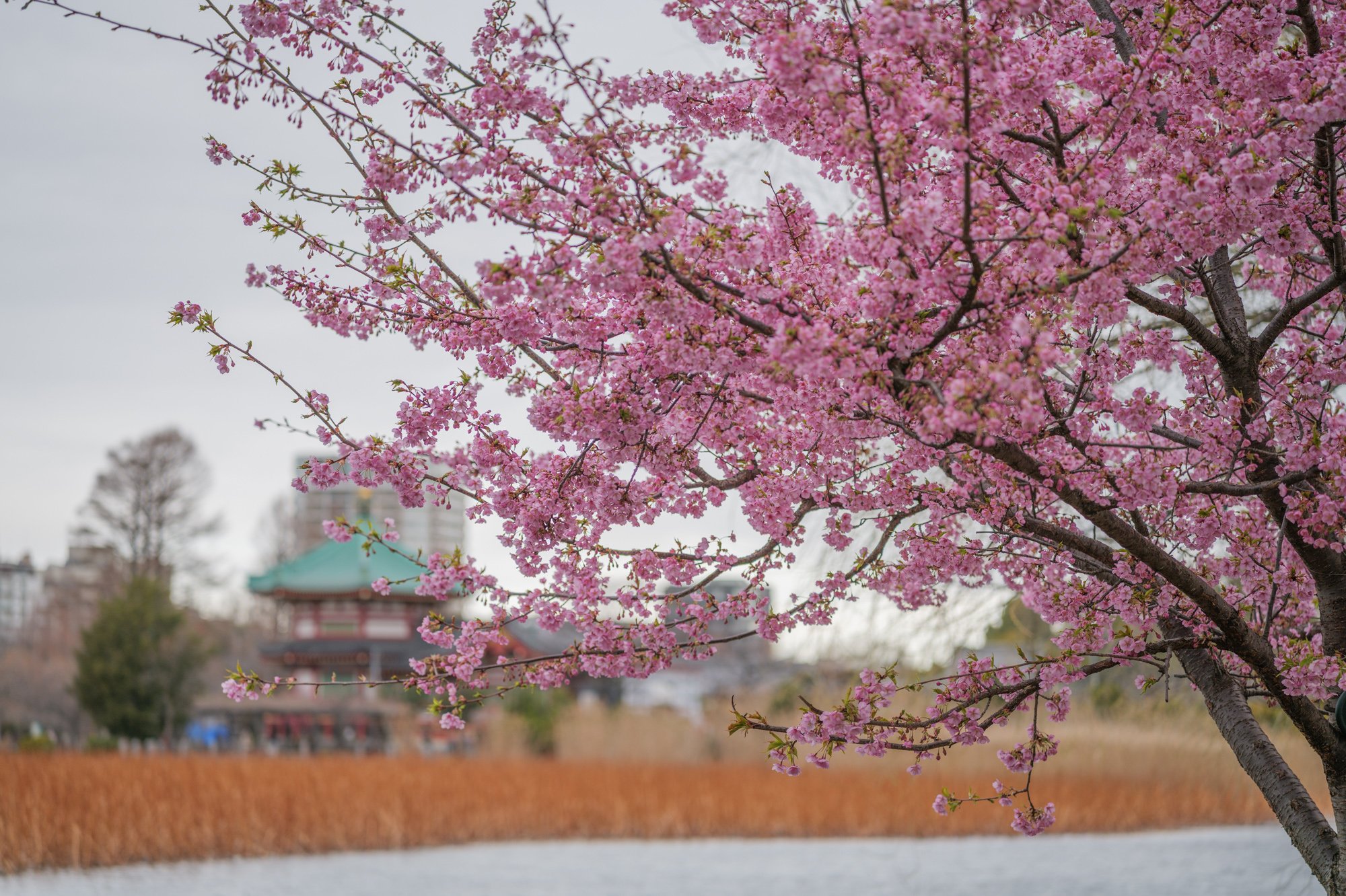
Regarding highlight recovery, the sensor works well up to around +1.6 EV. However, from +2 EV onwards, you will encounter a significant color shift that can severely degrade images.


High Resolution Mode 177 MP
As with most Panasonic mirrorless cameras, the Lumix S1R II includes a high-resolution mode, achieved by micro-shifting the sensor. This allows for highly detailed photos of 177 MP, directly processed internally, in RAW and JPEG.
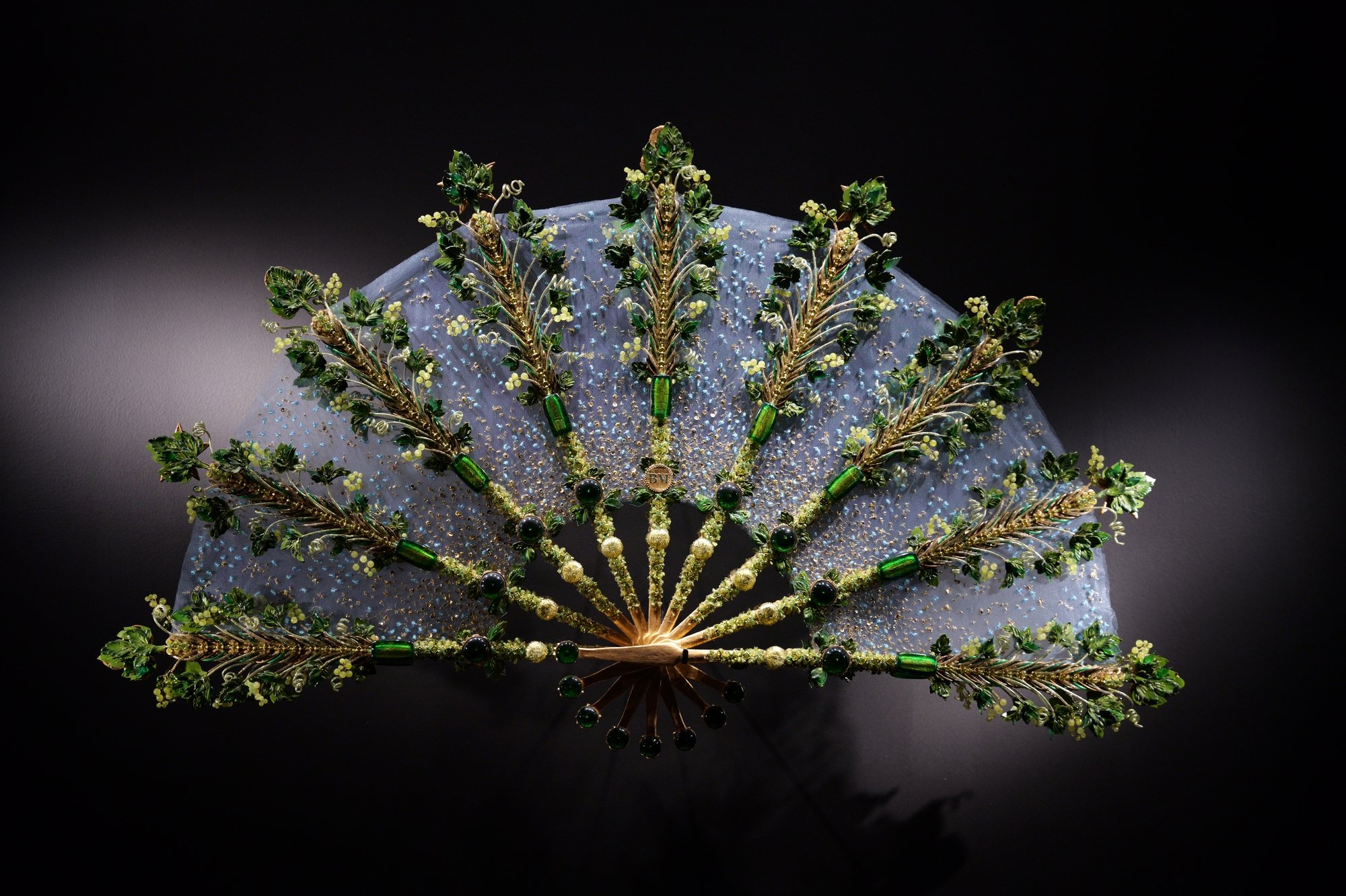

Here, the real strength of this mode is that it is available even when shooting handheld! Indeed, Panasonic has mastered the art of handheld pixel-shift – although this mode was previously limited to smaller and/or less defined sensors, like the Lumix G9 II or S9.
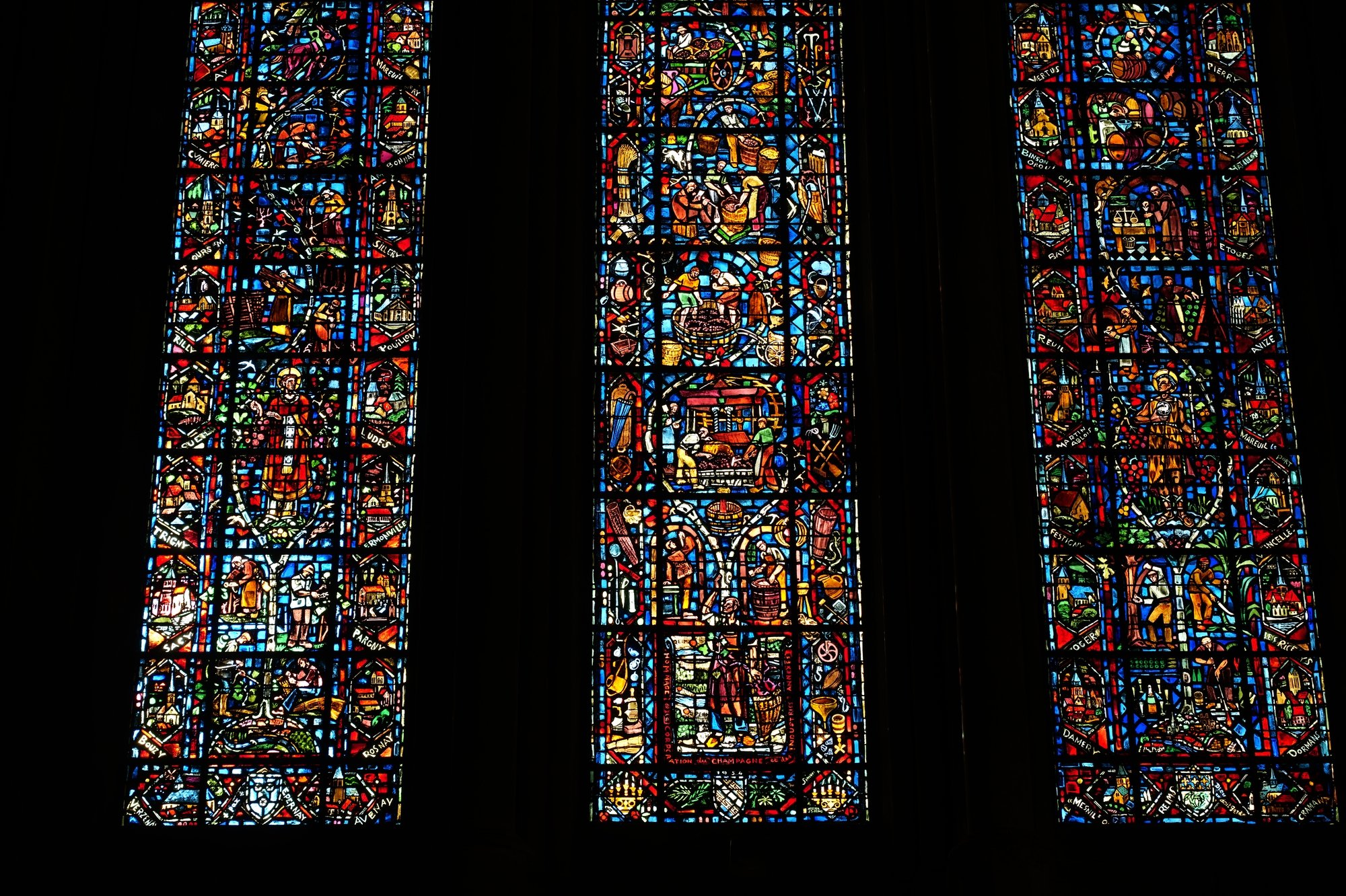

Once the option is activated – unless you’re shooting during an earthquake – the result is quite impressive. The obtained image is sharp and allows for intense cropping. In this mode, JPEG files weigh in at 82 MB, while RAW files approach 200 MB!
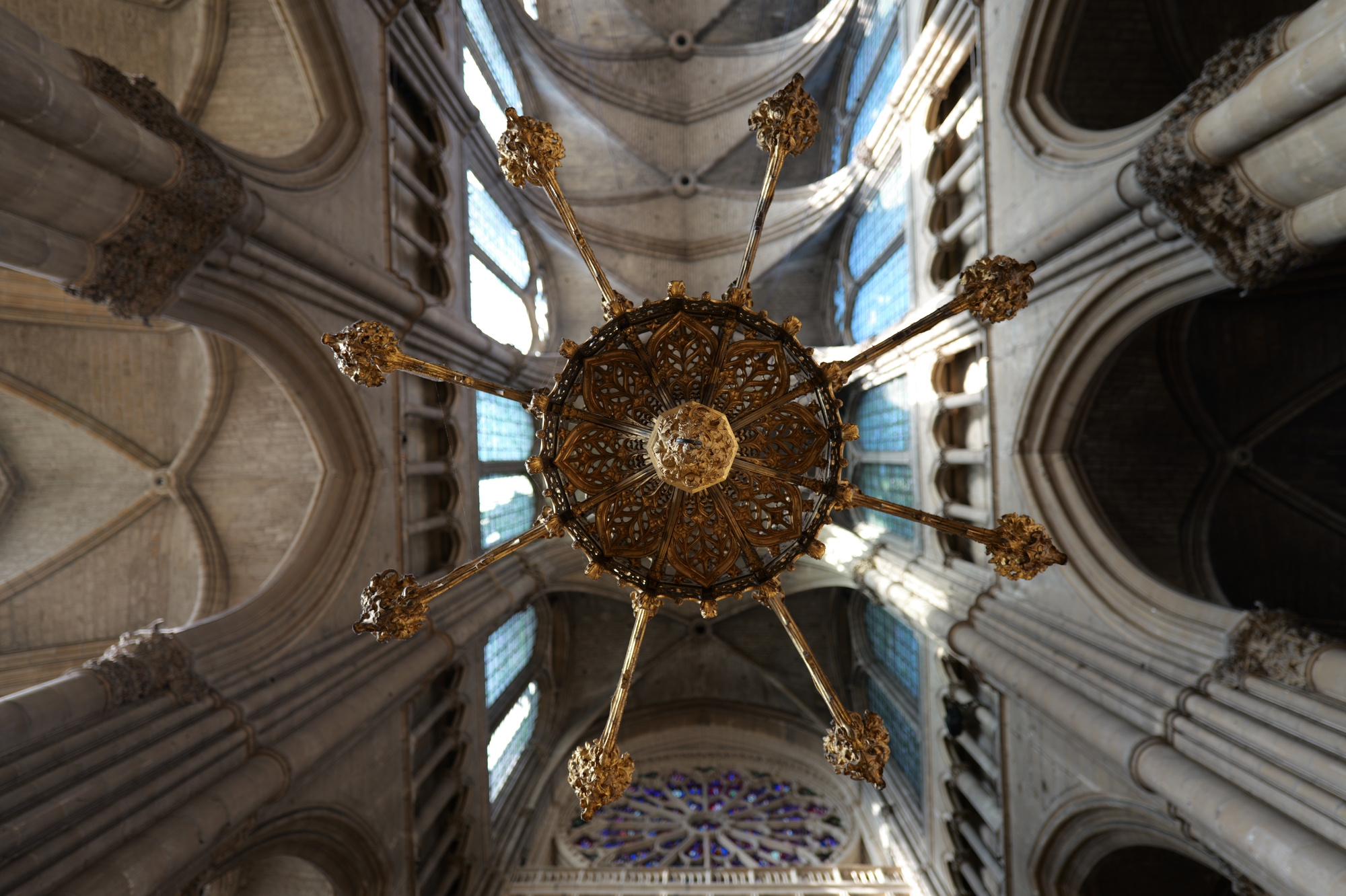
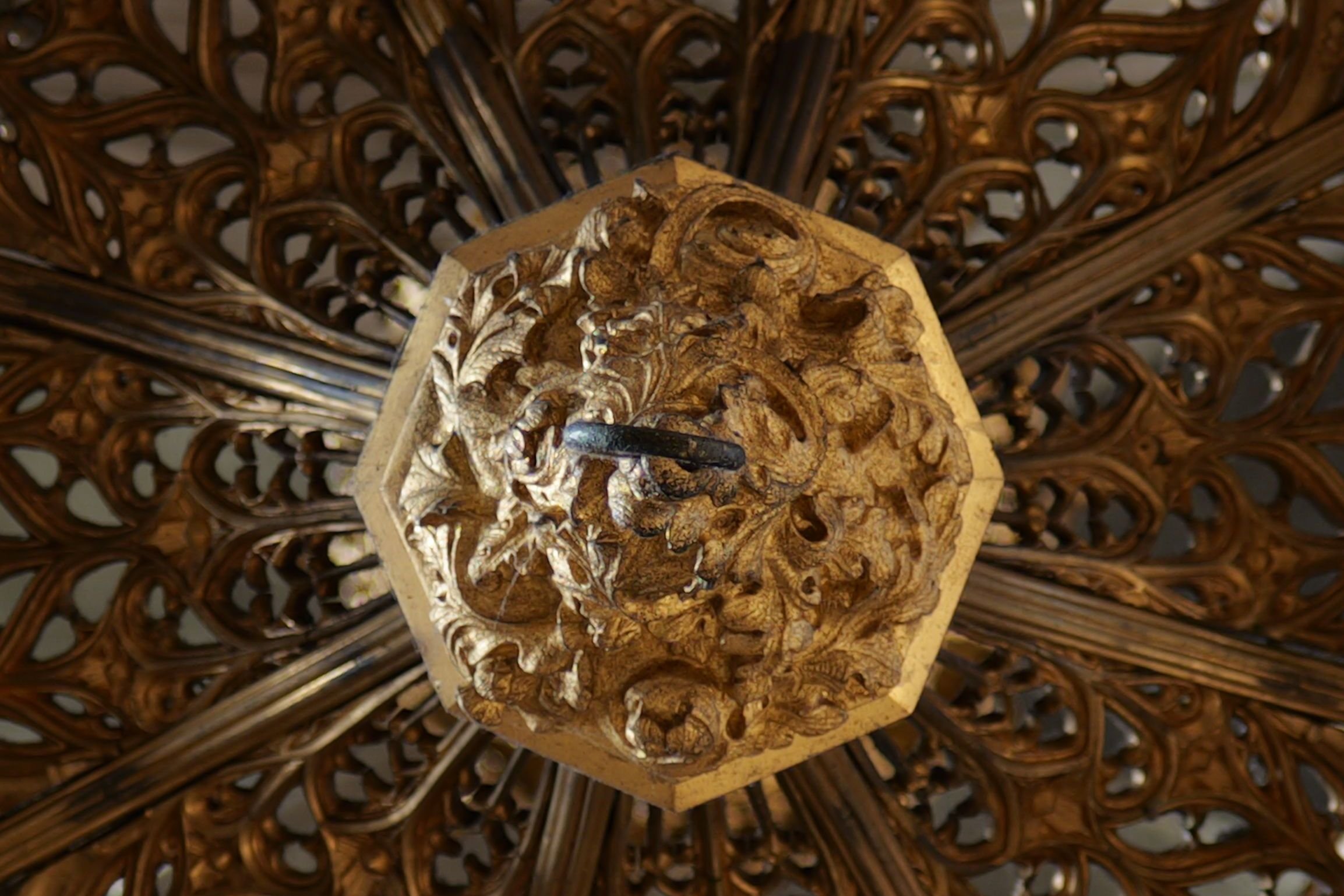
This system, while very effective, has two drawbacks. Firstly, the capture process and creation of a 177 MP file completely paralyzes the camera for 30 seconds. Secondly, despite improvements in stabilization and motion compensation, the rendering is not always perfect. Finally, the “Handheld Pixel Shift” mode is not activated by default: you must navigate through the settings menu before each high-resolution capture.
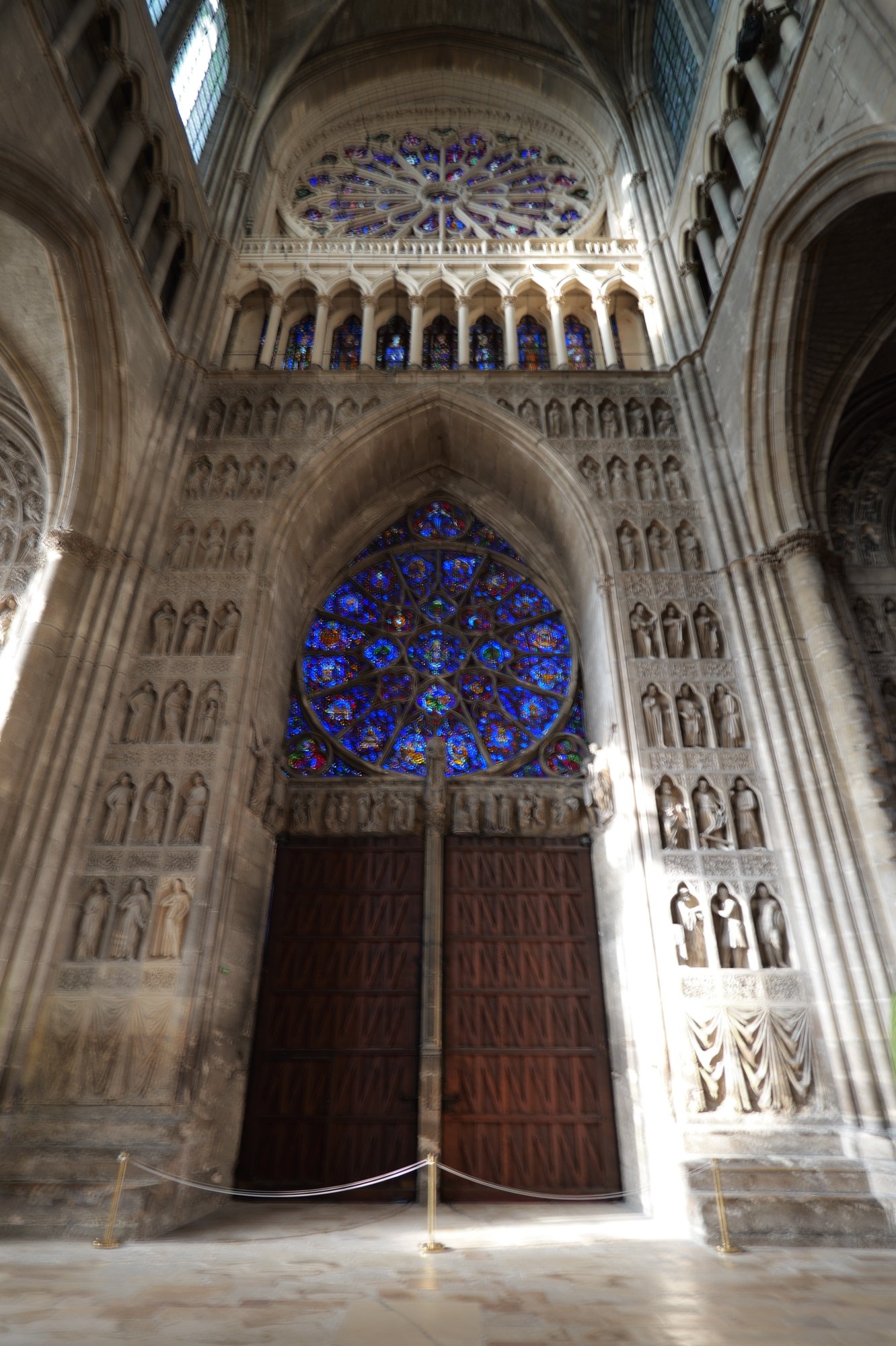
While we appreciate this very effective option, it’s worth noting that the alternative of internal upscaling, as proposed by Canon with its EOS R5 Mark II, appears to be much more practical, as it is available post-capture for all captured images.
Autofocus and Tracking of the Panasonic Lumix S1R II
The Panasonic Lumix S1R II uses a hybrid autofocus system with 779 selectable AF points, covering almost the entire surface of the sensor.
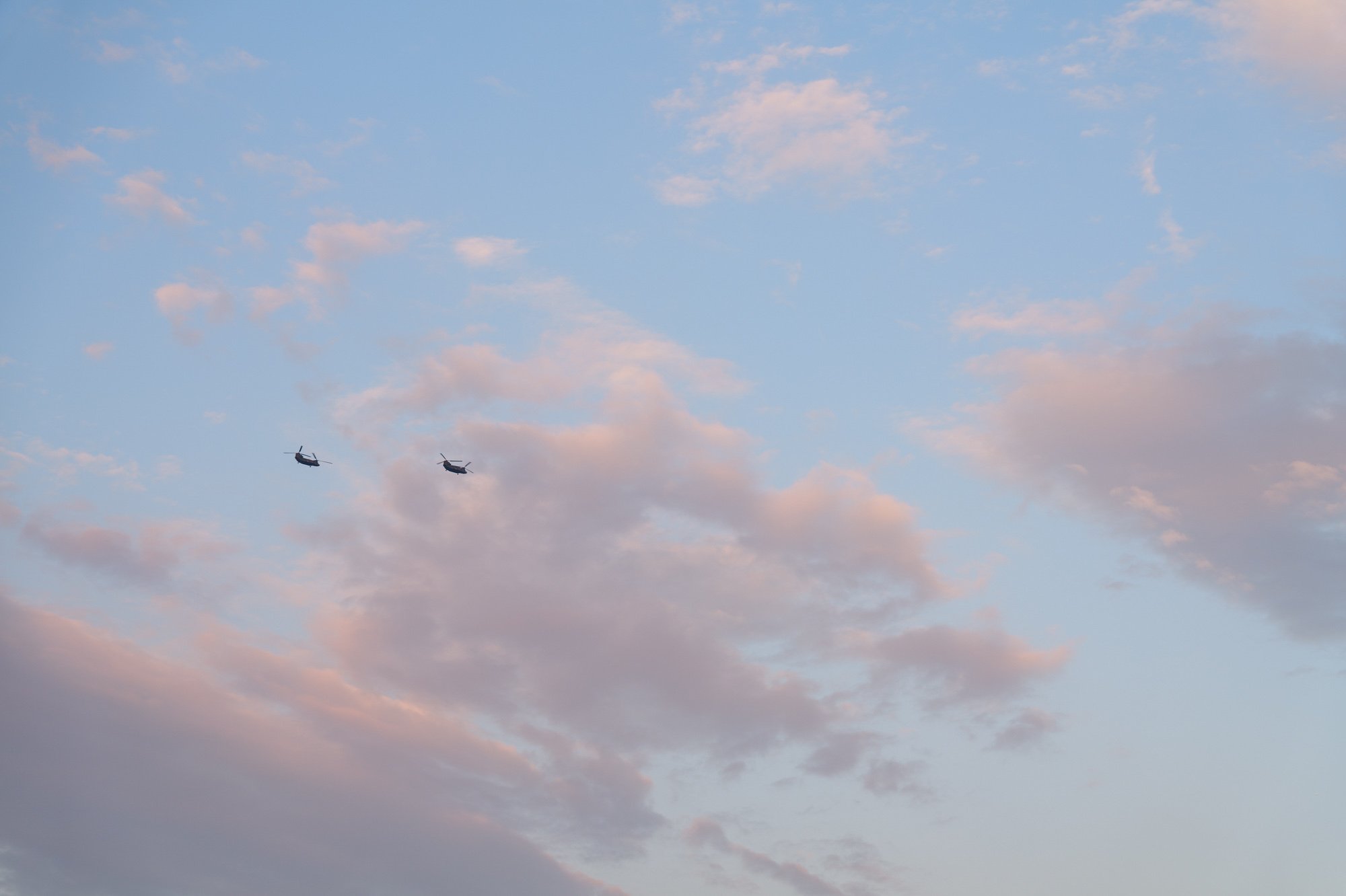
Panasonic has implemented its latest advancements in terms of autofocus. The brand aims to fully catch up with its competitors in this area.
The camera can detect and track faces, eyes, and bodies of humans and animals, as well as various vehicles (cars, motorcycles, bicycles, trains, or airplanes). For vehicles with a driver, you can choose between global detection or focusing specifically on the driver’s head.
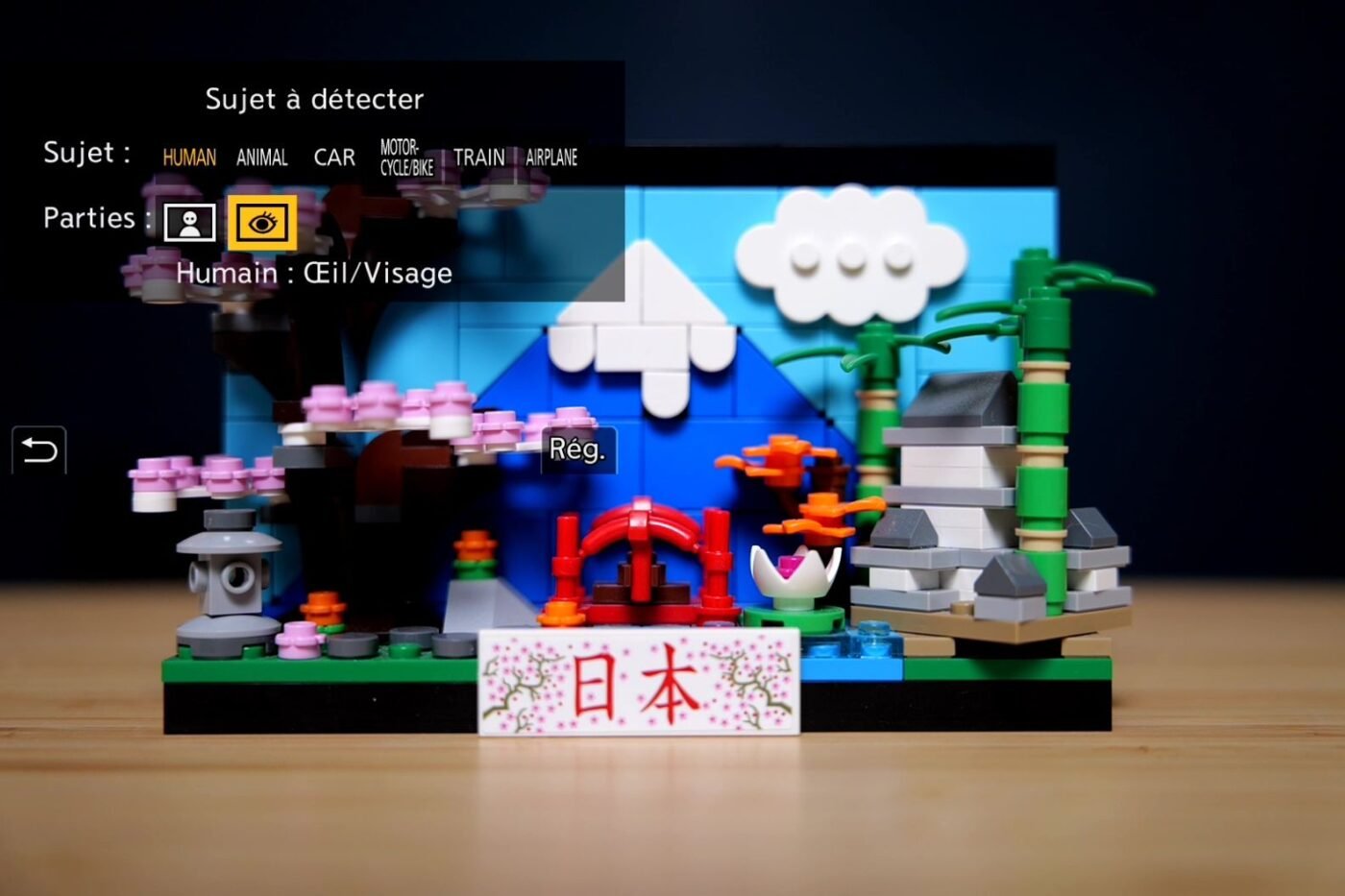
Let’s be clear, Panasonic has made excellent progress over the past few years. Certainly, everything is not yet perfect, and the AF is not quite at the level of Canon or Sony. But the S1R II still proves to be very efficient.


Humans are detected almost instantly and without any issues. The camera will be more hesitant with small birds, especially in burst mode, where the rejection rate can be quite high. However, this is logically less of a problem with subjects whose movements are easier to anticipate, such as a train.
AF tracking of a train, burst mode with mechanical shutter, ⚠️ Warning: The following animation may cause epilepsy risk
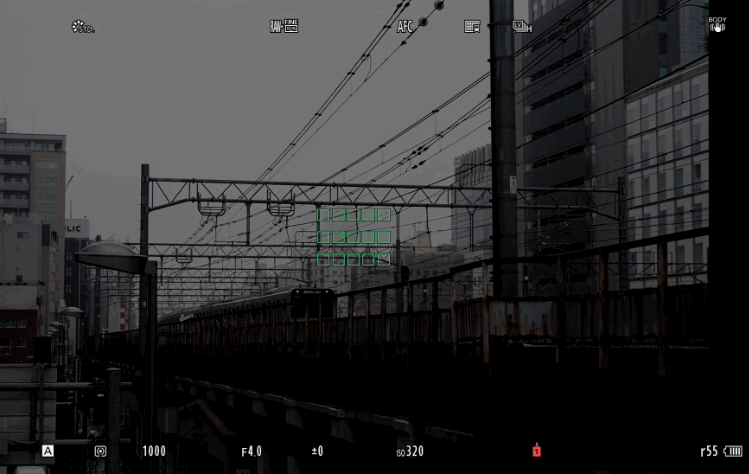
Overall, the results are very satisfying – and in line with a modern high-end camera. At no point did the device really let us down, providing a fast and precise autofocus in most situations, even in low light and with lenses featuring sometimes hesitant AF motors.
Burst and Buffer
The Panasonic Lumix S1R II offers a burst rate of up to 40 fps with an electronic shutter. It stands out as the first camera to offer such a fast burst rate at such a high resolution.
In fact, the Canon EOS R5 Mark II or Sony A1 II “only” reach 30 fps. However, there are three limitations to this ultra-fast speed: RAW files are 12-bit instead of 14-bit in this mode; a limited buffer; and a very pronounced rolling shutter effect – which we will discuss later.
With mechanical shutter, the burst rate drops to a more reasonable 10 fps (12-bit RAW) or 9 fps (14-bit RAW).
As mentioned earlier, the AF tracking is very efficient, even in high burst mode. Except for subjects with very fast or unpredictable movements, the S1R II does an excellent job. Paired with a long telephoto lens, especially from Sigma, it becomes a great ally for wildlife photography or even sports photography, provided you reduce the burst speed slightly.
Note that the Panasonic Lumix S1R II includes a Pre-Recording mode (RAW+JPEG). This allows the camera to capture images between 0.5 and 1.5 seconds before pressing the shutter. The number of captured images depends on the selected burst speed and is also limited by the camera’s (very) small buffer. This function can be very useful for capturing the key moment of an action, especially in wildlife photography.
Rolling Shutter
The rolling shutter is perhaps the biggest weakness of this Lumix S1R II. Indeed, Panasonic chose a non-stacked sensor for its flagship model – likely for cost reasons.

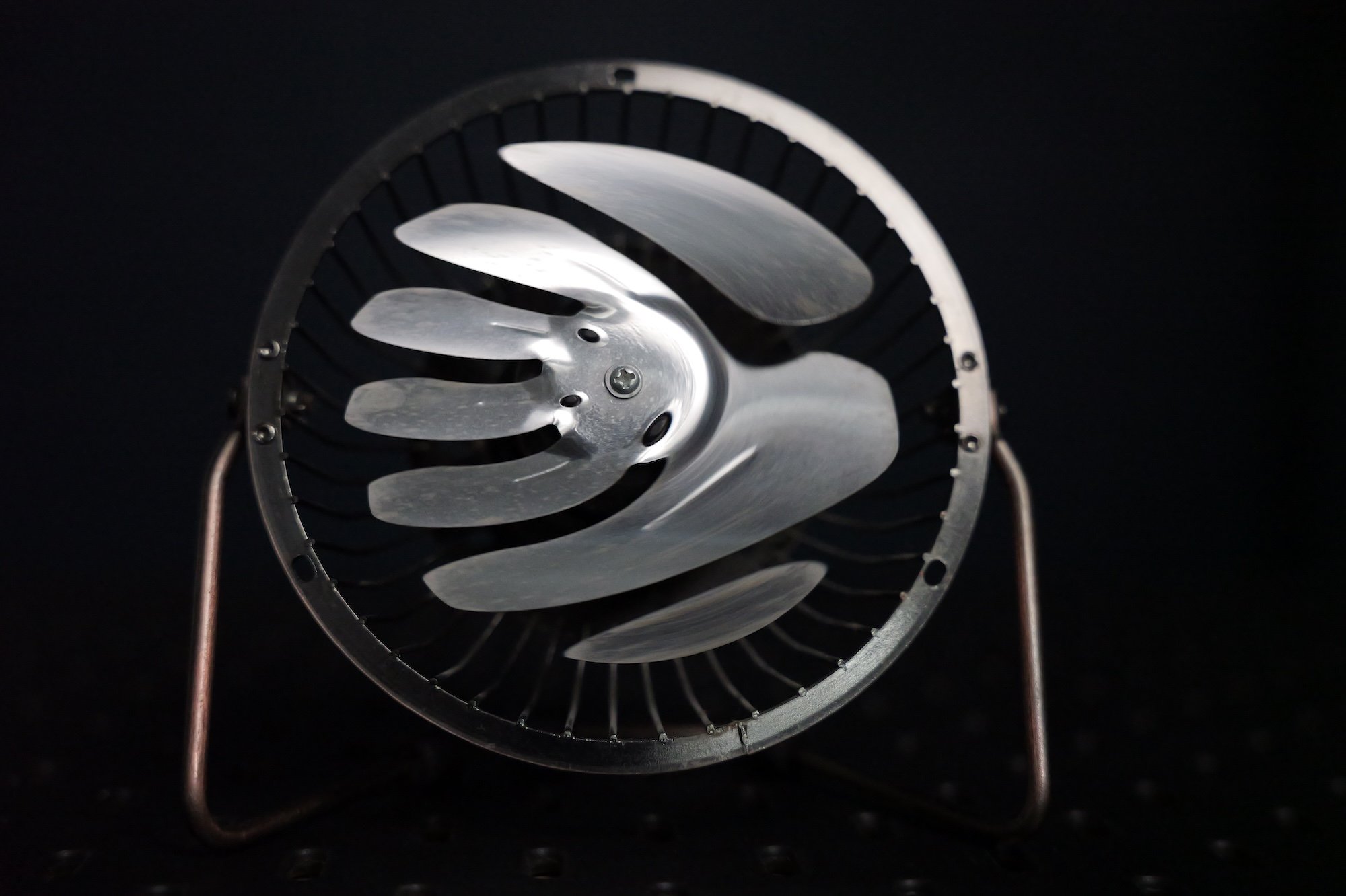
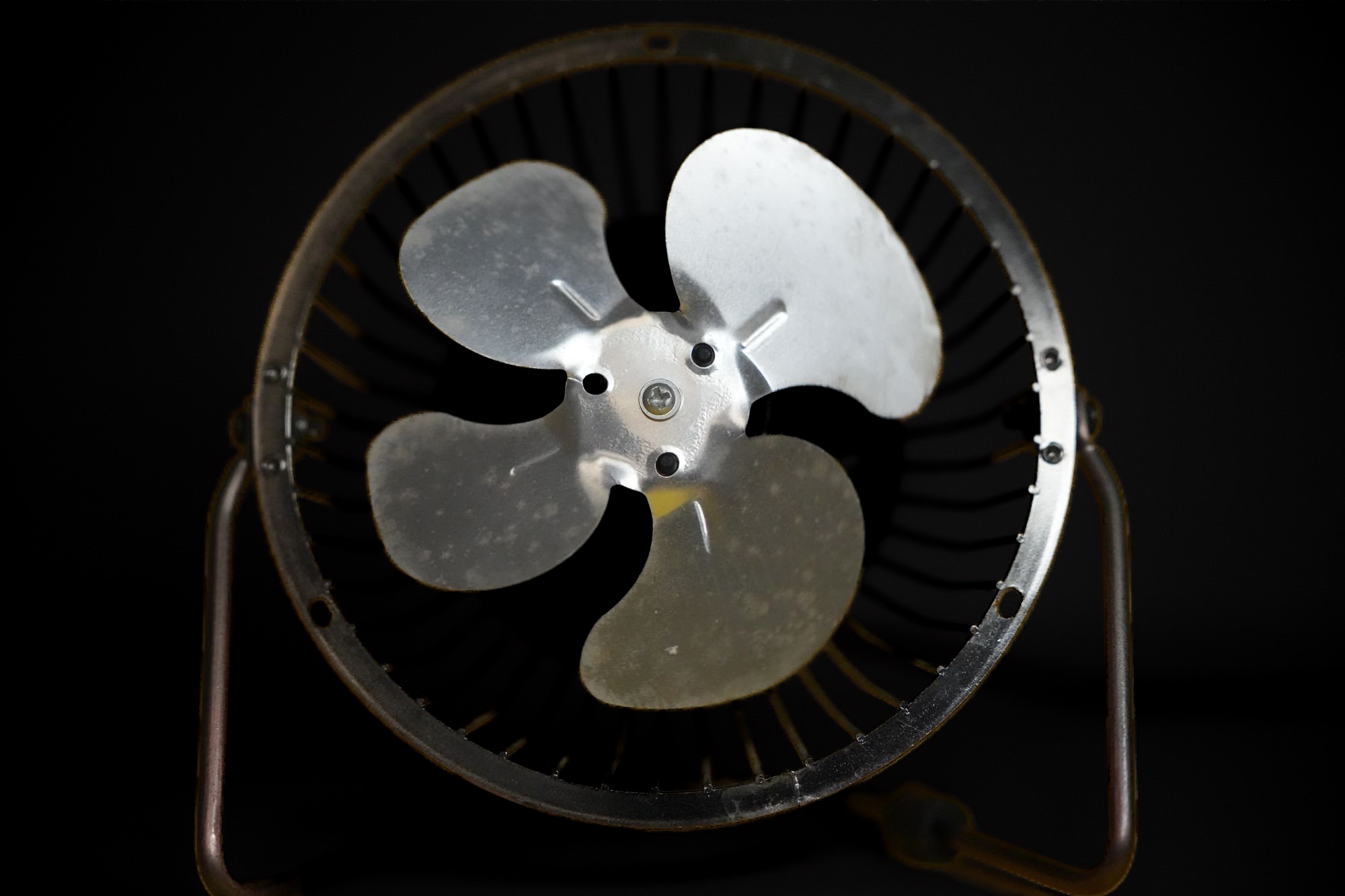
Unfortunately, a non-stacked sensor with such high resolution inevitably results in a rather slow readout speed. Consequently, with the slightest bit of fast motion – and when using the electronic shutter – images end up with irreversibly distorted vertical lines.
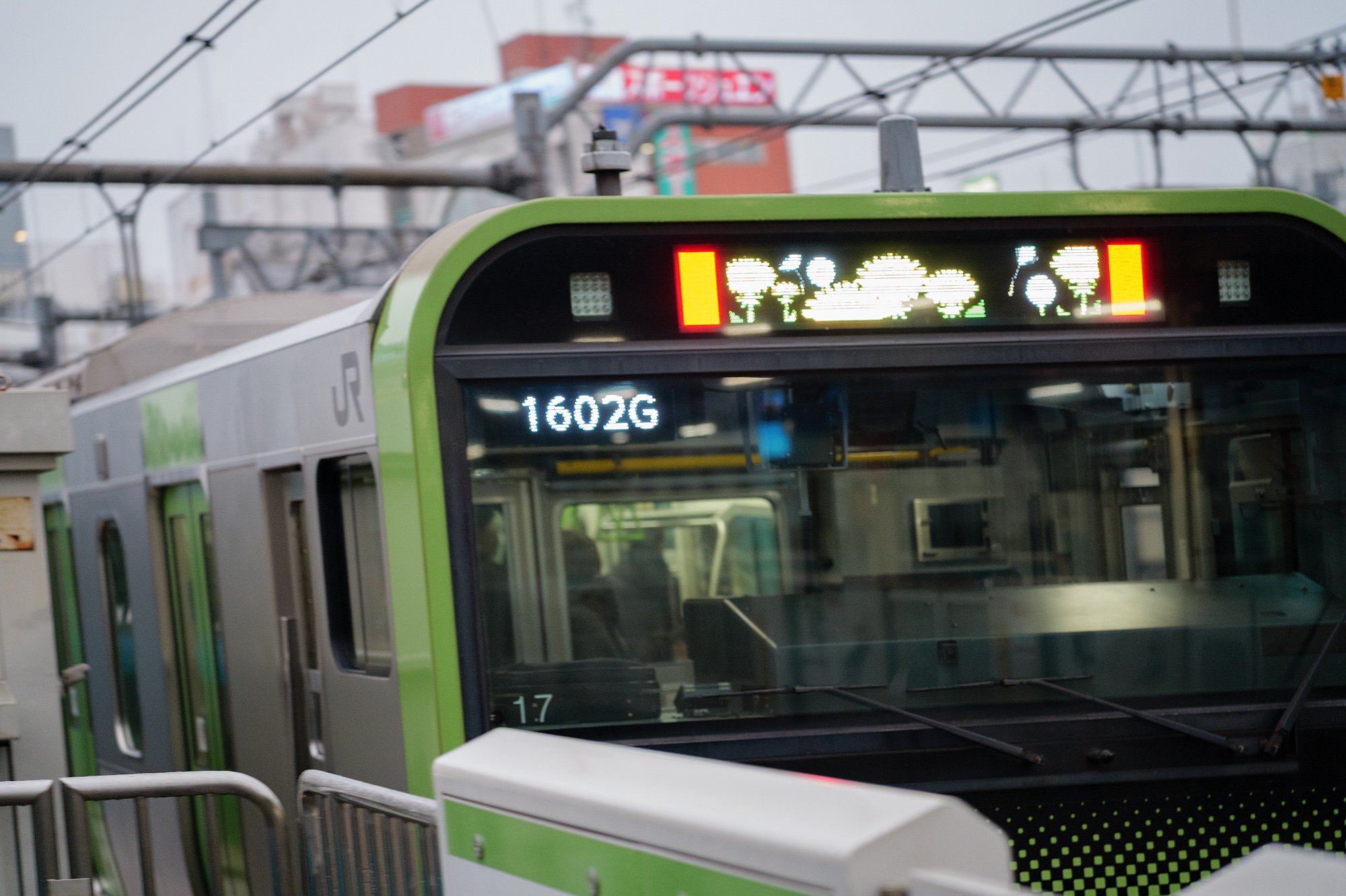
This issue is impossible to overcome – unless you stick with the mechanical shutter. This seems to be the most effective solution to fully enjoy the camera’s capabilities.
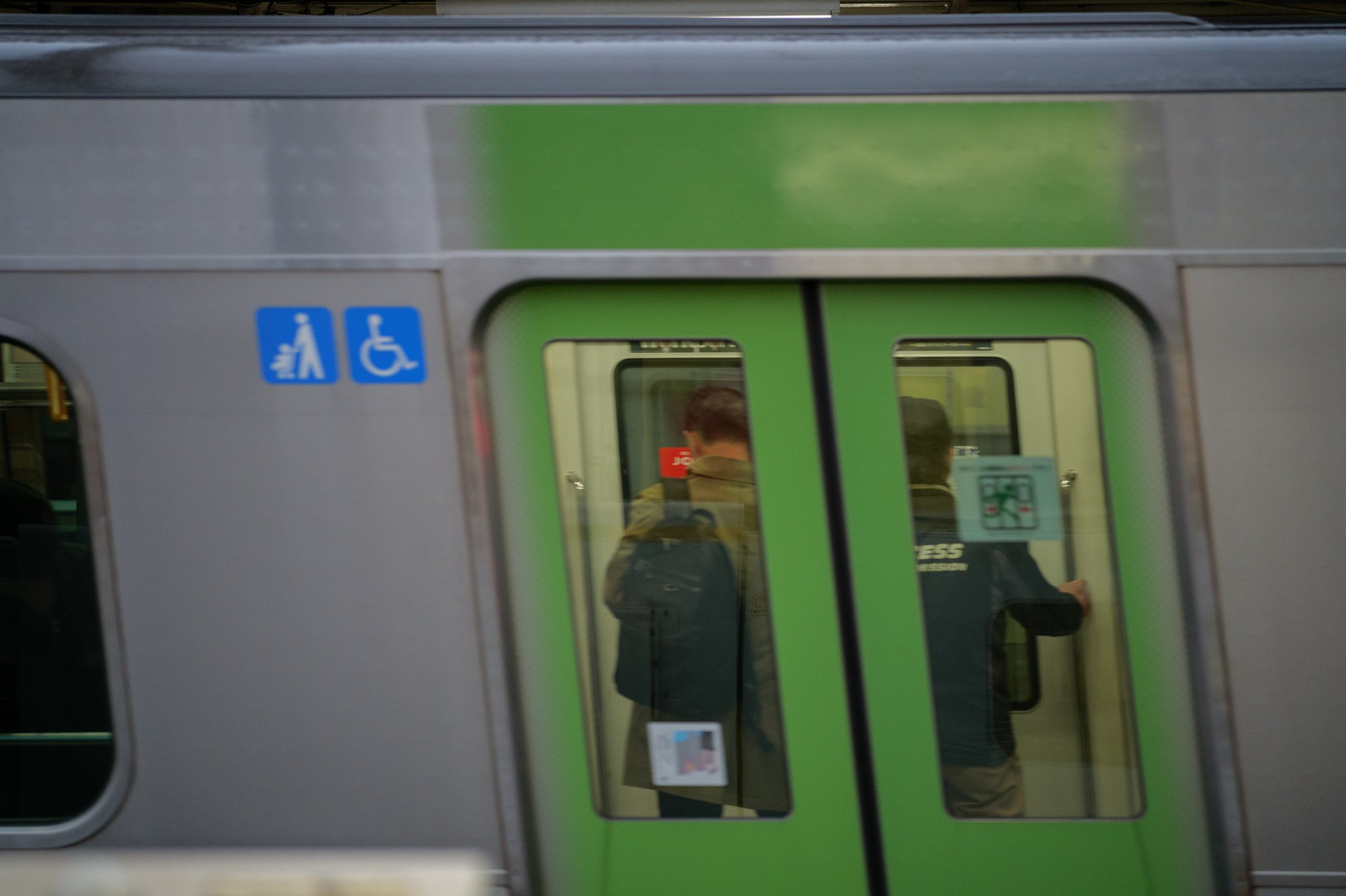
Stabilization
If there is one area where the S1R II surpasses the competition, it is in the realm of 5-axis sensor stabilization.
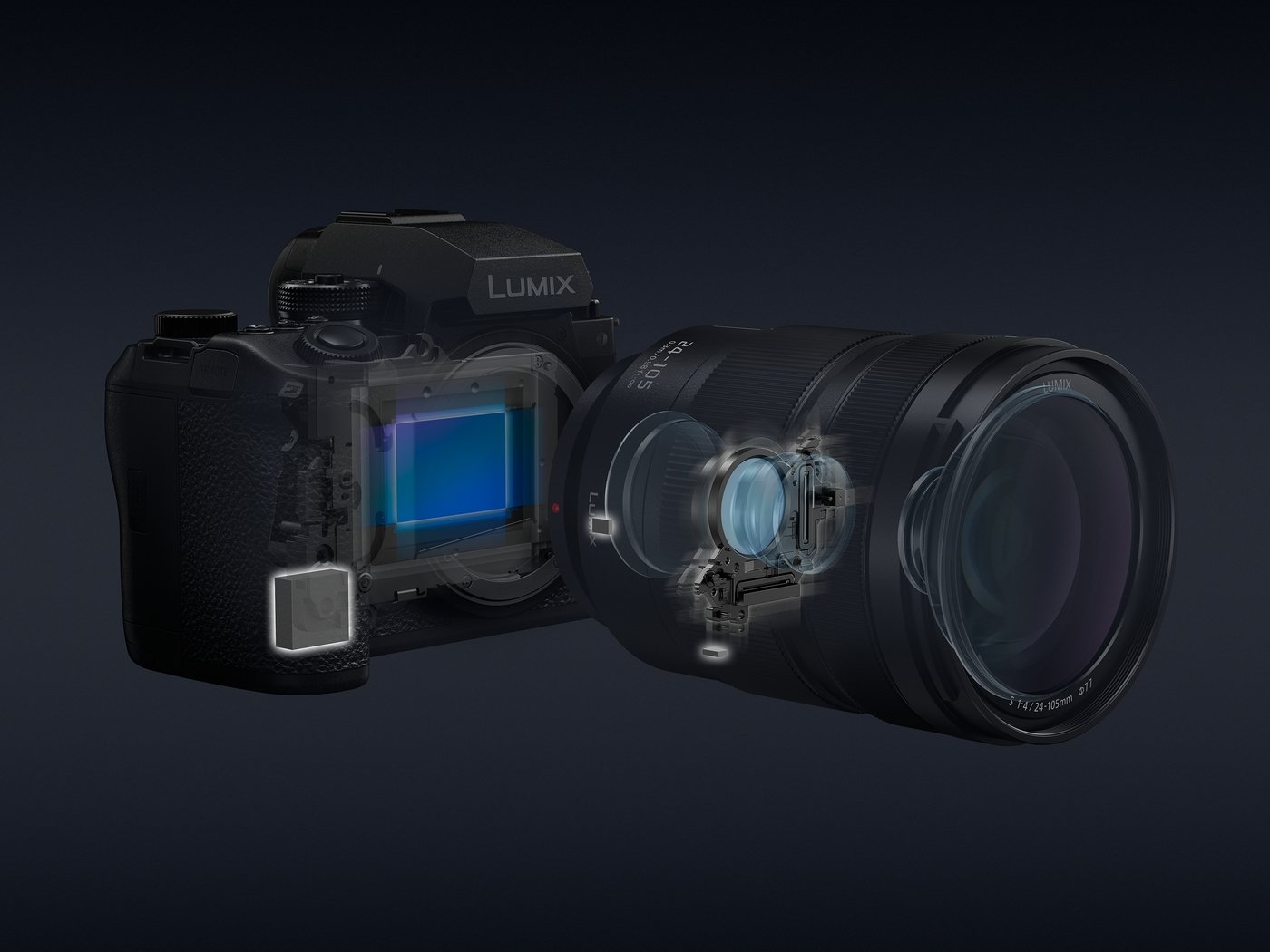
The camera can compensate for a theoretical gain of up to 8 stops. While this value has already been claimed – or even exceeded – by other manufacturers, this is one of the rare times we have managed to achieve performances close to what the manufacturer claims.
Obviously, achieving an 8-stop gain is almost miraculous, but we were able to consistently reach 5 or 6 stops without issue. This demonstrates a very good control of stabilization. Let’s remember that it’s this same stabilization system that enables the use of handheld pixel-shift.
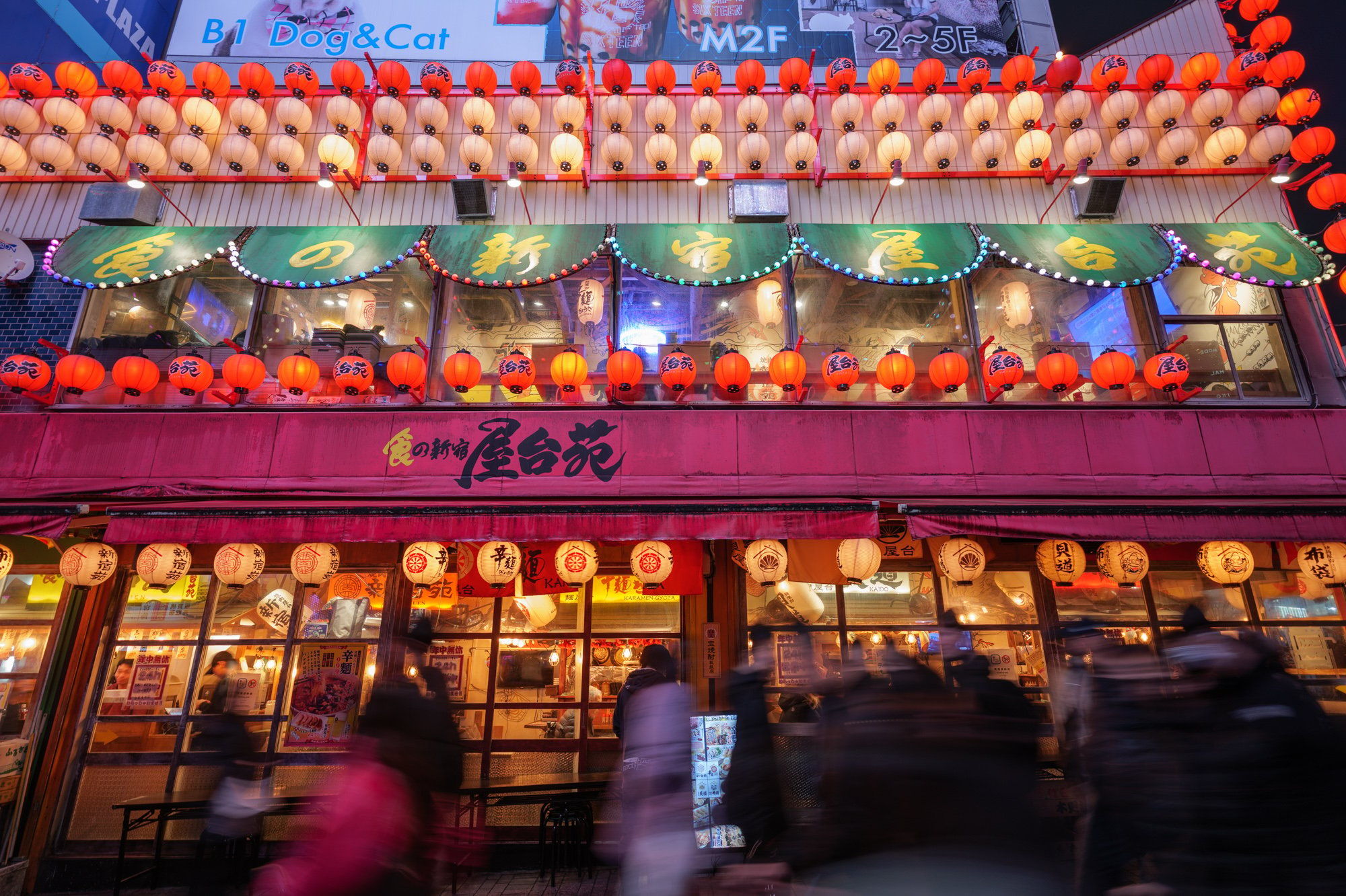
Panasonic Lumix S1R II: The Reliable Companion for Videographers?
Panasonic always takes pride in equipping its mirrorless cameras with the best video options available in its catalog. And with the S1R II, the Japanese firm is pushing its limits even further.
Indeed, the Lumix S1R II becomes the first Lumix camera capable of shooting video at up to 8.1K 30 fps (4:2:0, 10-bit, and 17:9). The company also highlights the ability to capture sequences in 8.1K (or 7.1K) at 3:2 (or Open Gate, using the entire sensor surface). However, this function will only be available after a free update coming in 2025.
For now, recording in Open Gate is only possible in 6.4K, which remains very comfortable. For the full details of the (very) numerous video formats, we invite you to refer to the table below.
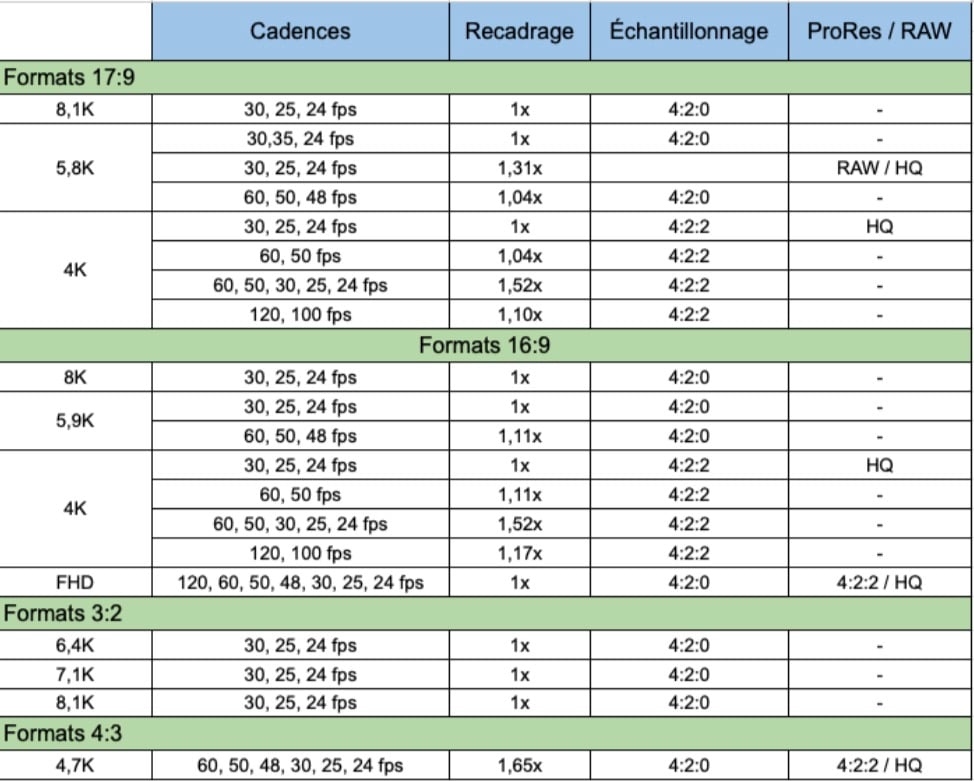
All these formats are available internally. However, there is a “small” catch. To capture in RAW or Apple ProRes, you will need to invest in the new battery grip DMW-BG2. Indeed, despite an integrated fan and modern design, the camera alone cannot handle such formats.
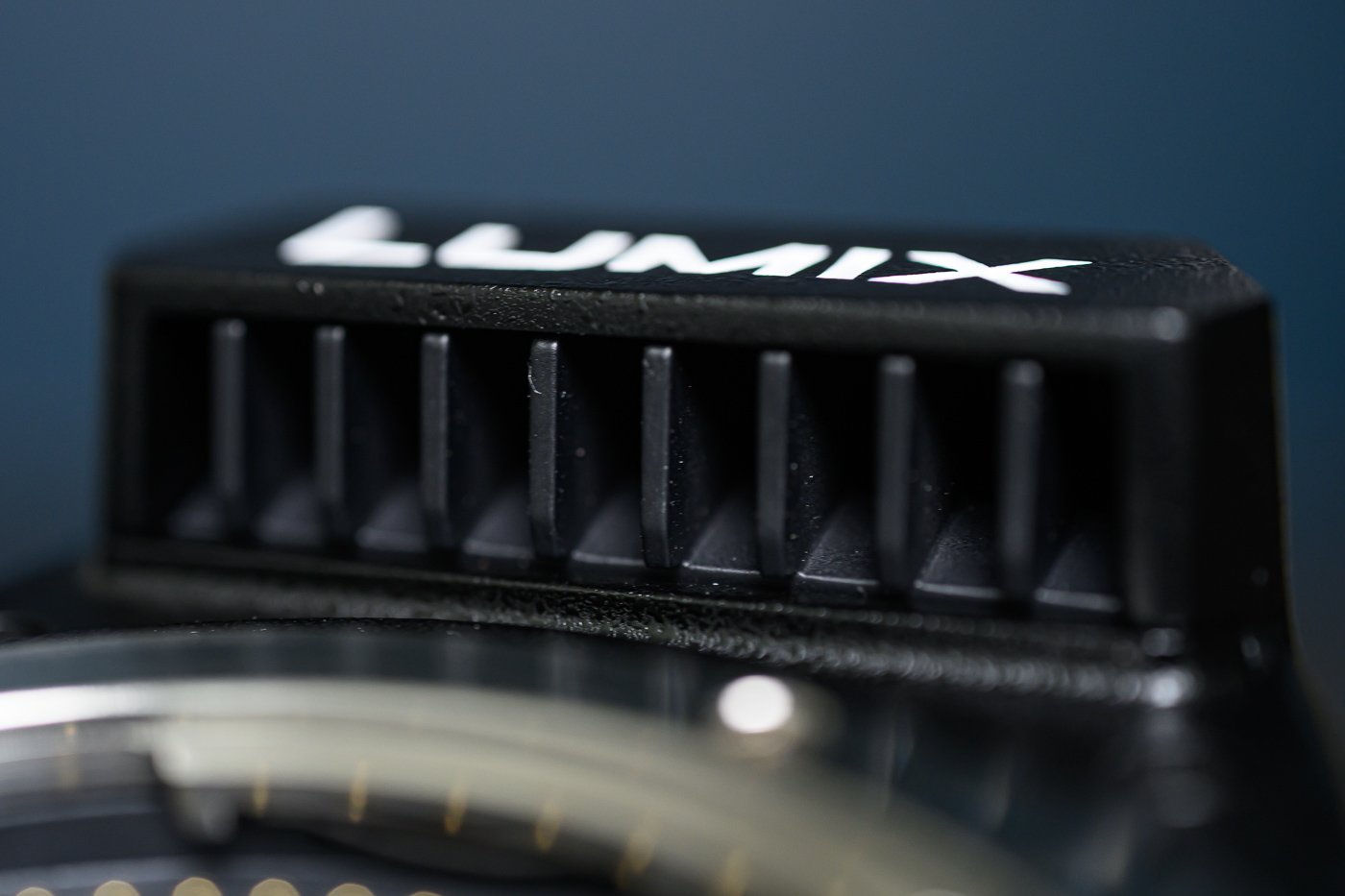
As we noted during the camera’s announcement, this feature surprised us because some competitors, like the Nikon Z8, offer higher bit rates without requiring additional accessories. For comparison, the 8K N-RAW at 60 fps of the Nikon Z8 has a bitrate of 5.78 Gbit/s, while the S1R II’s 5.8K peaks at “only” 4.2 Gbits/s.
Undoubtedly, this setup helps the S1R II to gain endurance. At its maximum, the S1R II can generate up to 31.5 GB of data per recorded minute! In 4K UHD, 60 fps, and 4:2:2, 10-bit, each captured minute weighs around 6 GB. Fortunately, Panasonic allows direct recording to SSD – a very relevant option that Panasonic has extended to all its devices… and which other manufacturers should clearly take inspiration from.
The quality of the files is excellent. Like the photos, the videos offer a certain appeal. Videographers, particularly professionals, may see the S1R II as the culmination of Panasonic’s capabilities in the field.
Autofocus is just as effective in video mode, with all recognition and tracking modes available. It also includes the V-Log/V-Gamut profiles, allowing users to recover more than 14 stops of dynamic range in video. The CineLike A2 profile can also be used. Not to mention all the most advanced video options, including false color, available for the first time on a Lumix body.
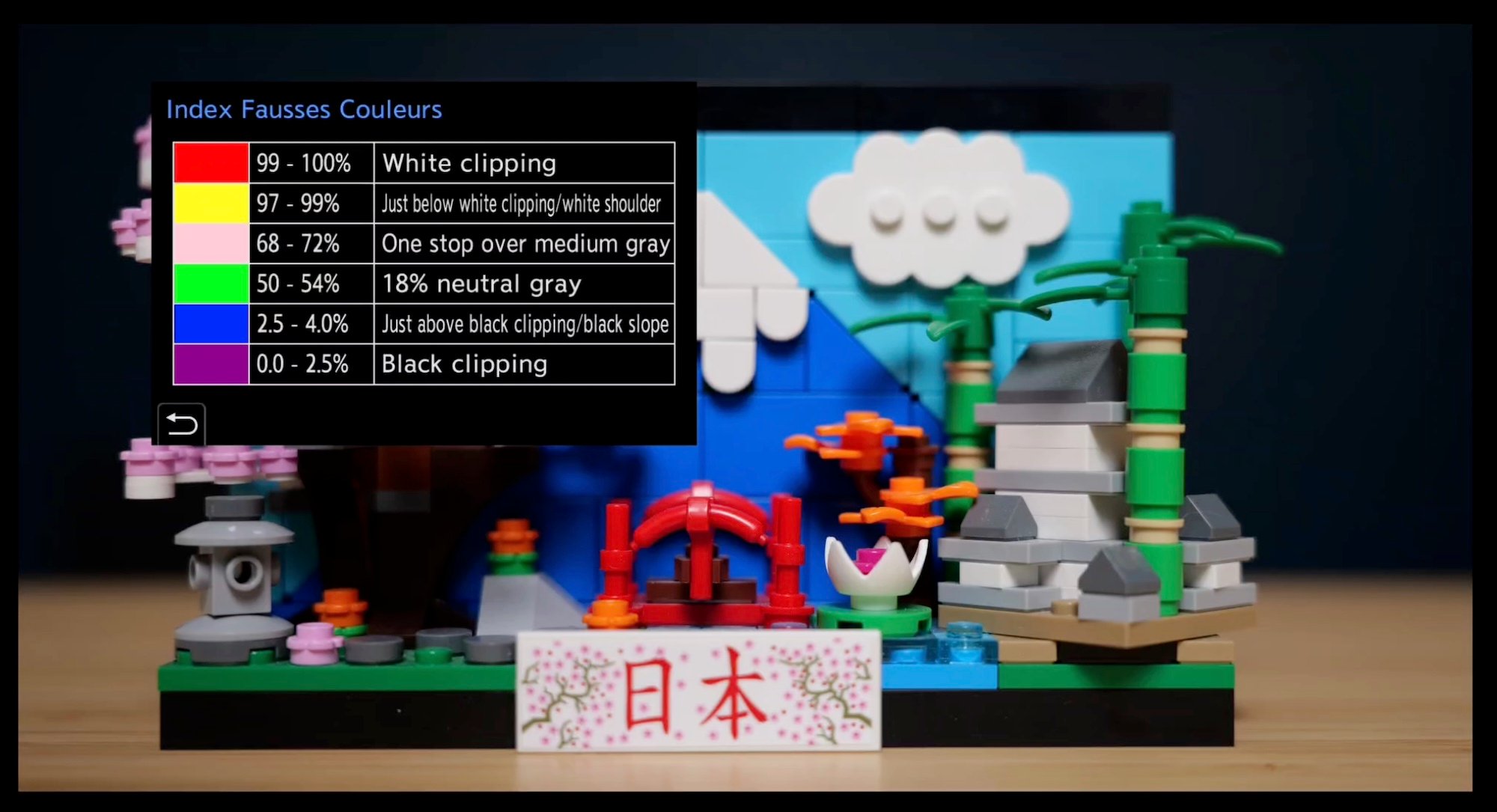



This tool allows for more precise exposure checking than with traditional waveforms. For more details on the (numerous) video options, we refer you to our article on the S1R II presentation.
However, there is still a major flaw when recording in 6K and above: the… rolling shutter! Indeed, at the highest resolutions, the distortion of vertical lines is quite pronounced. It’s a real shame because when moving, the various stabilization modes do an outstanding job of reducing shake, with numerous effects to compensate for movement or distortions, without sacrificing the field of view.


Typically, cameras apply electronic cropping as an additional level of stabilization – at the cost of cropping the image. This option is also available on the S1R II. However, this camera features advanced stabilization known as “cropless”, which offers very effective stabilization without affecting the original framing. Impressive.
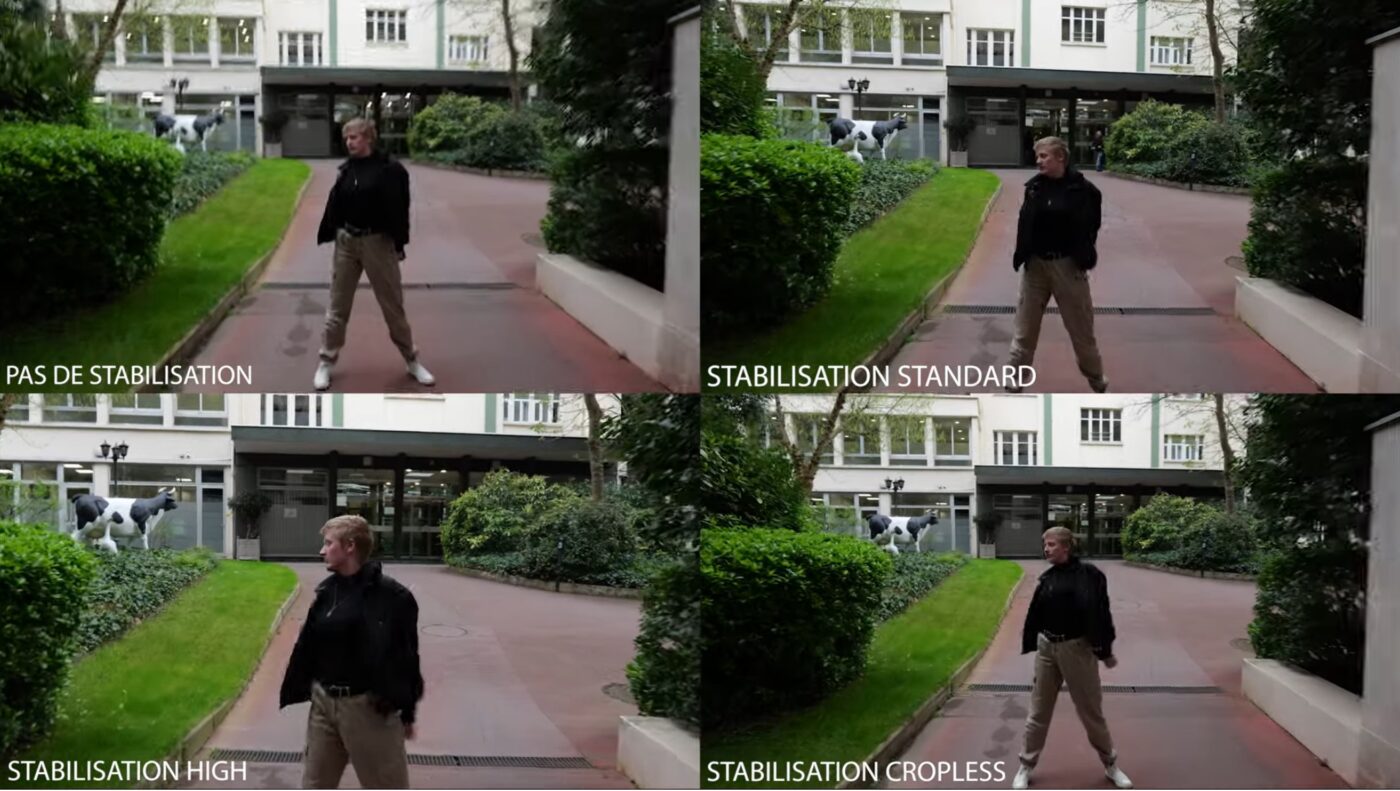

Battery Life of the Panasonic Lumix S1R II
The Panasonic Lumix S1R II uses the DMW-BLK22 battery (2200 mAh) from the S5 II. The stated battery life is around 330 shots (in live view mode). This is slightly less than the original S1R, which had a larger battery.
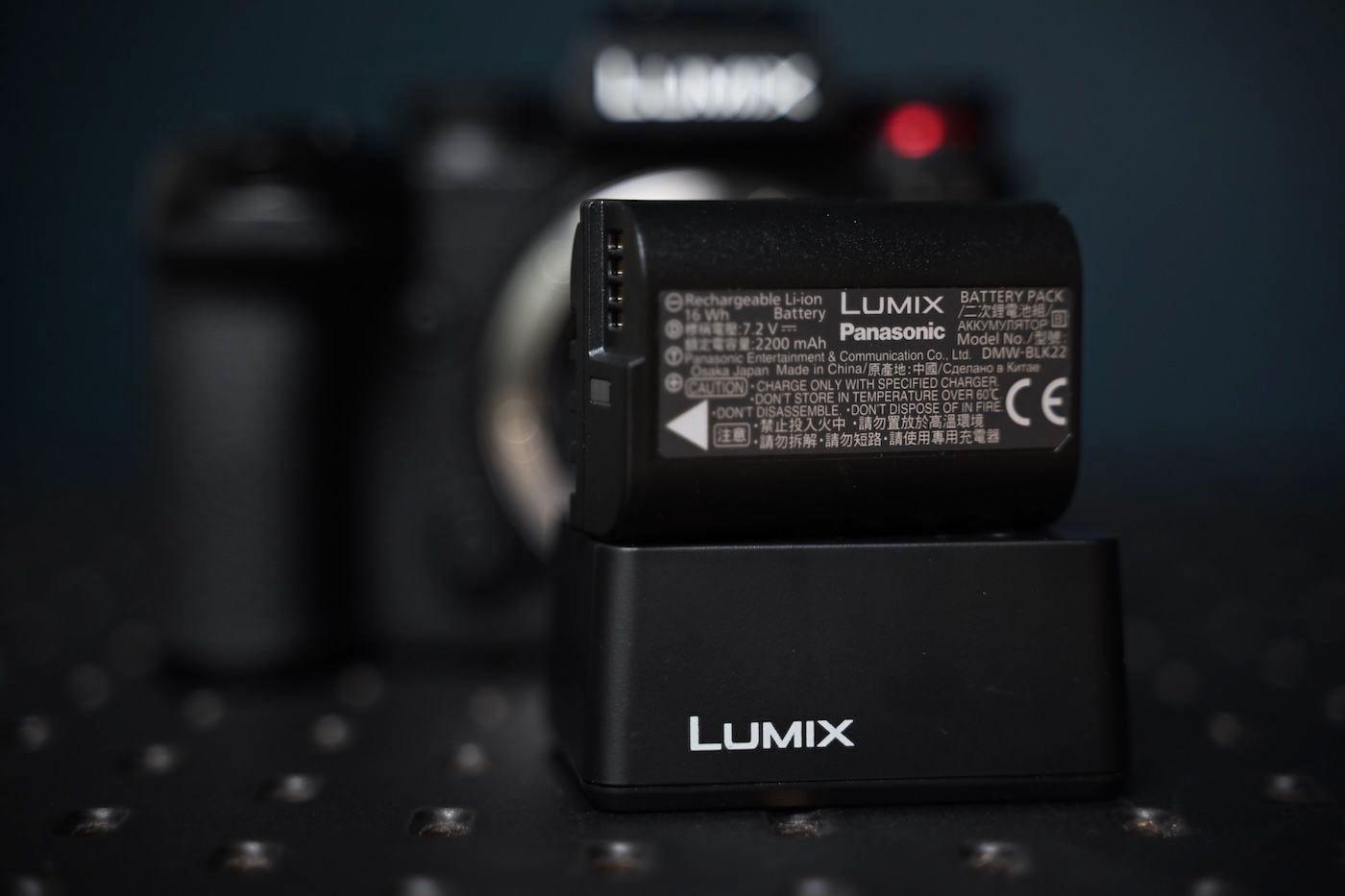

On the field, we were quite satisfied with the performance of this battery. We managed to complete days with over 700 shots, alternating between stills, bursts, and video sequences. Good point: the Lumix S1R II comes with an external USB-C charger.
Connectivity and Storage
The body features, on its left side, 2 x 3.5 mm jack ports (microphone and headphone), an HDMI Type A port, and a USB-C 3.2 Gen2 port (10 Gb/s). On its right side, there is a micro-USB remote control port.
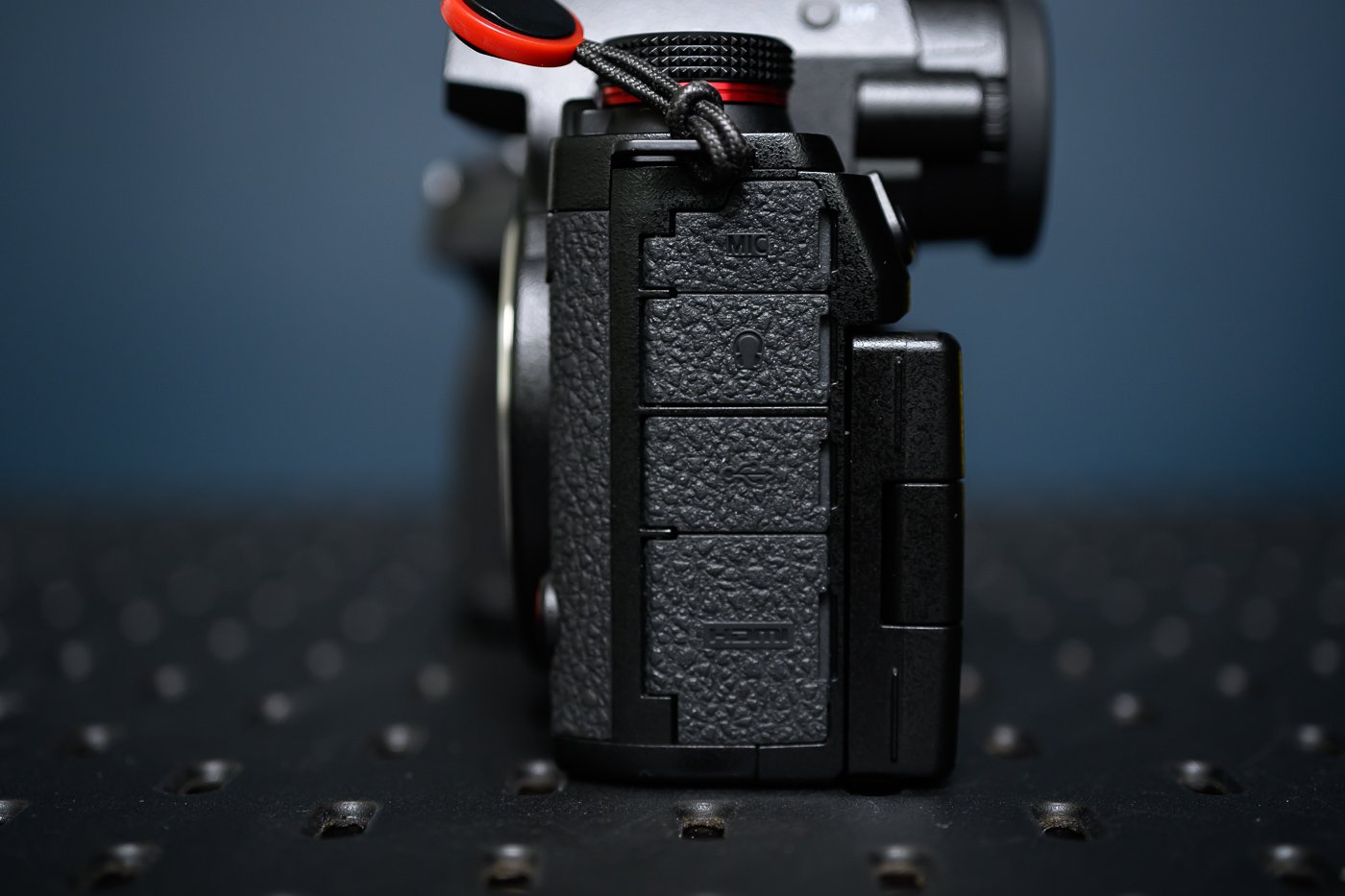

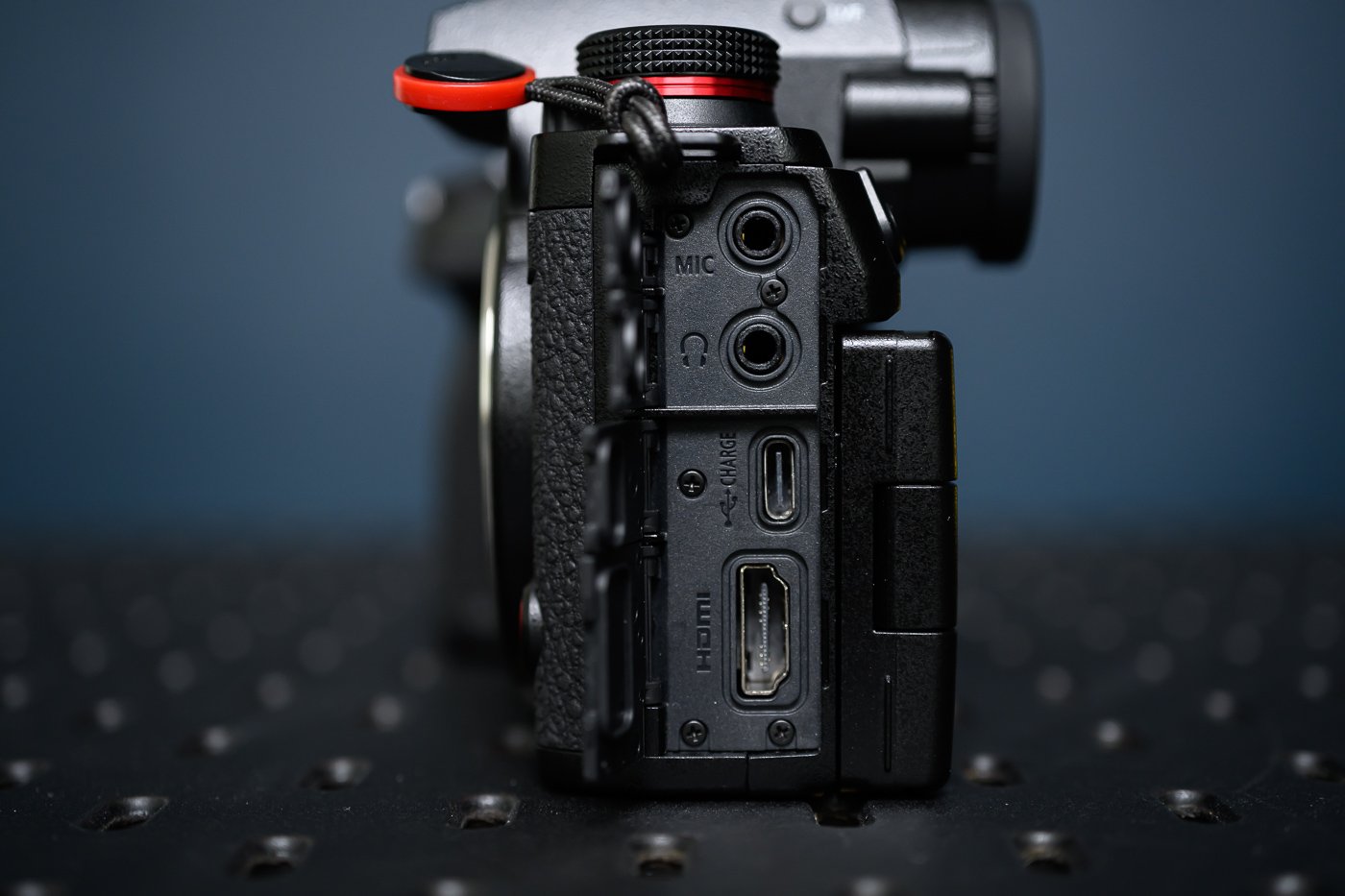

For storing images and videos, the Lumix S1R II is equipped with a CFexpress Type B card slot and a SD UHS-II card slot. It is possible to enable redundancy or overflow recording. Finally, the S1R II can record photos and videos directly onto an external SSD.
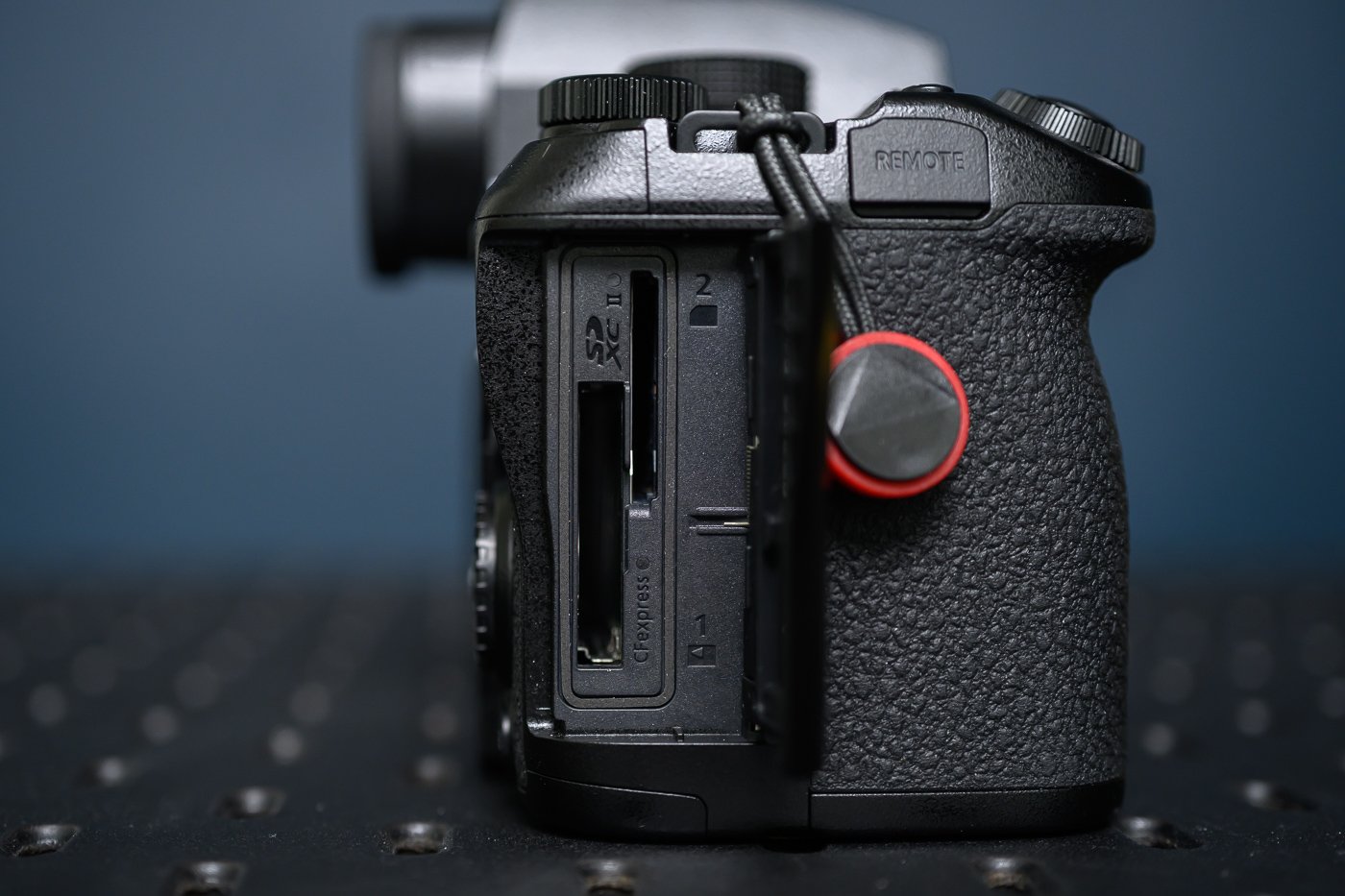

Direct recording to an SSD is a definite advantage for those who want to film in the heaviest video formats without being constrained by the capacity (or cost) of CFexpress cards. Note that the camera cannot automatically start recording when an SSD is connected: you must enable disk recording from the menus and then disable it when you wish to resume recording on memory cards.
In terms of wireless connectivity, the device is fully compatible with the Lumix Flow and Lumix Lab apps. For more details about how the latter works – which allows, among other functions, downloading or creating LUTs – we refer you to the dedicated section from the Lumix S9 review.




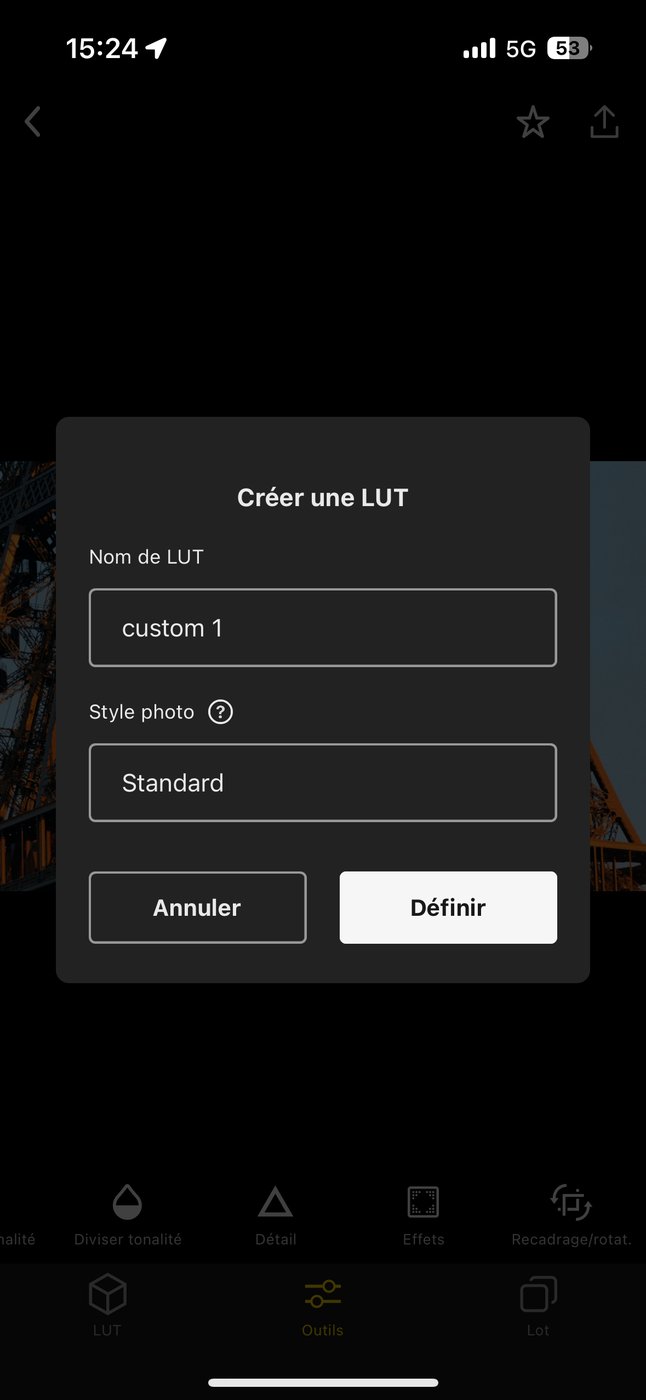

As for the Lumix Flow app, it allows you to replace several tools, such as an external monitor, with a simple smartphone, offering an interesting integration with various editing software. We have also detailed its functionality in a dedicated article.
Panasonic Lumix S1R II: Close to Perfection, But…
With its Lumix S1R II, Panasonic offers an ultra-versatile camera. It delivers excellent image quality in photography with a more responsive autofocus than ever and highly efficient stabilization.
Additionally, its ergonomics are truly refined, addressing the few shortcomings that were noticeable on the Lumix S5 II. Naturally, the S1R II features an extensive video mode, with numerous options and various formats to satisfy almost everyone, from occasional videographers to professional filmmakers.
Finally, it can rely on the L-mount lens ecosystem, which includes some outstanding lenses.
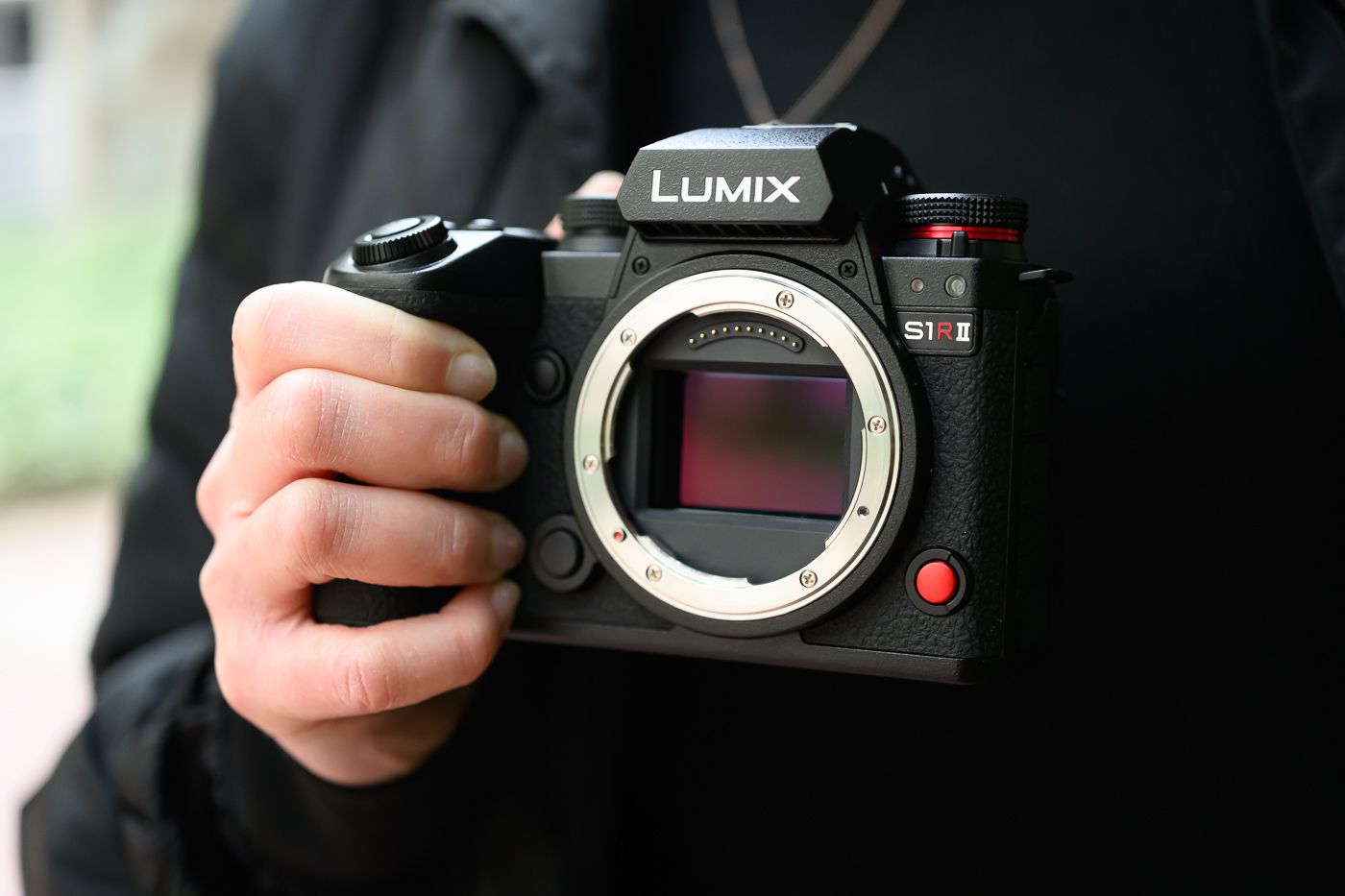

Despite its many qualities, a few frustrations slightly tarnish the overall picture.
The sensor, although very detailed, is not stacked — a choice that severely limits the use of the 40 fps burst mode, due to severe distortions caused by the rolling shutter. Additionally, it suffers from a limited buffer memory that cannot sustain long bursts. This problem also extends to video formats, where shooting in 8K is equally prone to distortion.
However, if the Panasonic Lumix S1R II is used in mechanical shutter mode and if one sticks to 4K, the camera proves to be remarkably effective, especially considering its very aggressive pricing below 4000 €. Once its limitations are clearly understood, this camera can compete without hesitation with heavyweight competitors such as the Nikon Z8, Canon EOS R5 Mark II, or even the Sony A1 II.
The Panasonic Lumix S1R II is available at a price of $3,297 for the body only.
The DMW-BG2 grip is priced at $347. Note that it is sold without the BLK22 battery, which must be purchased separately to make it work.

